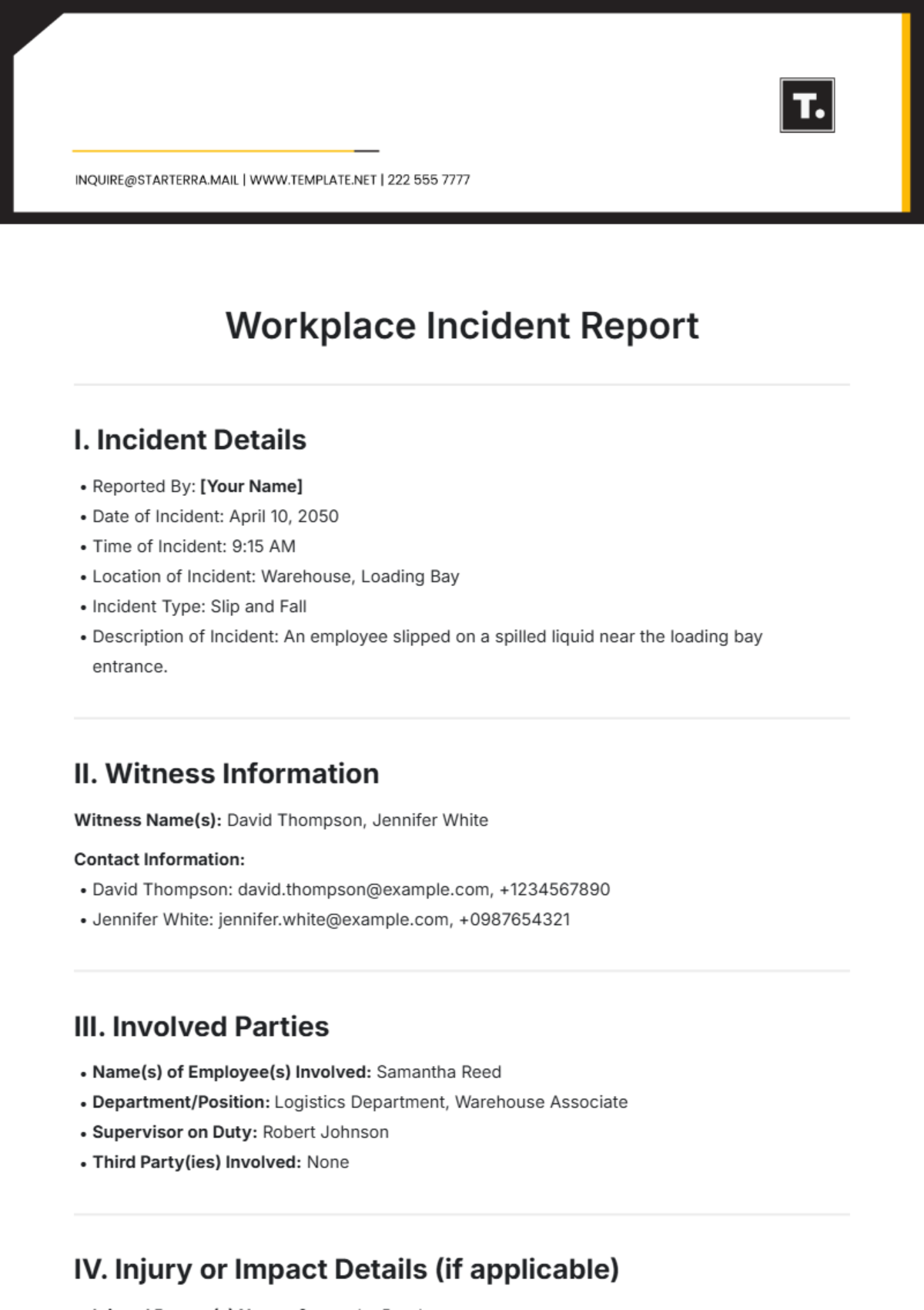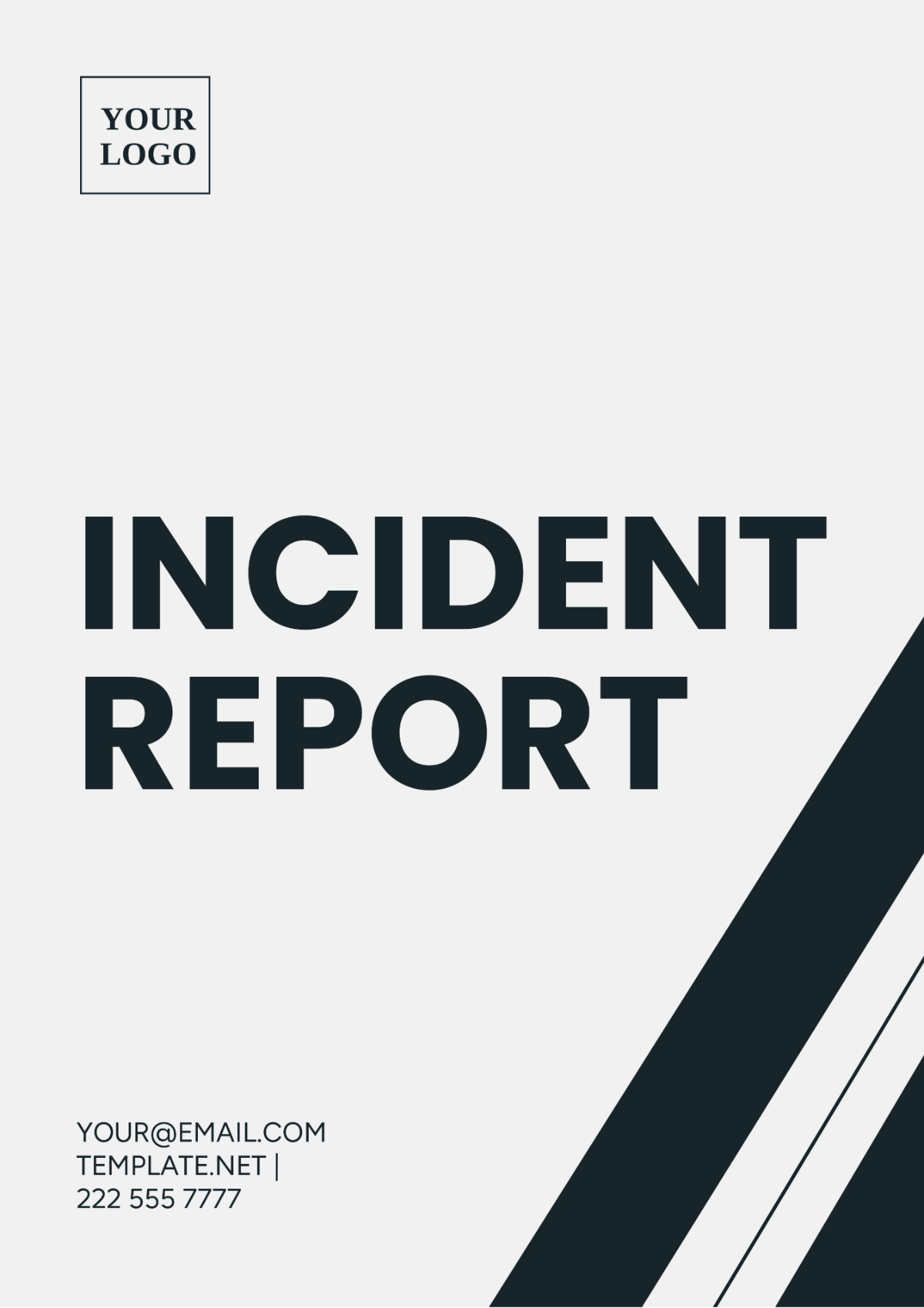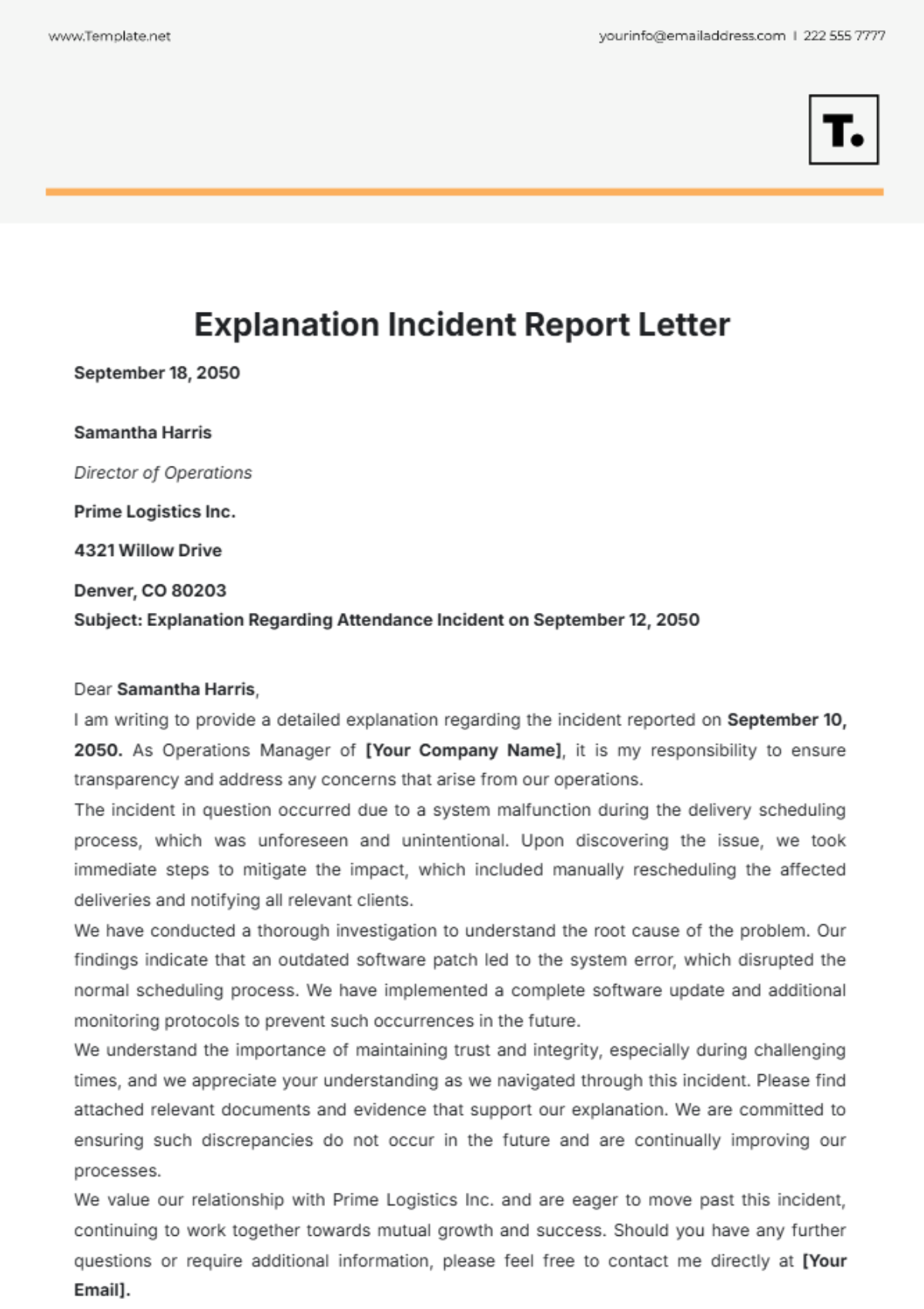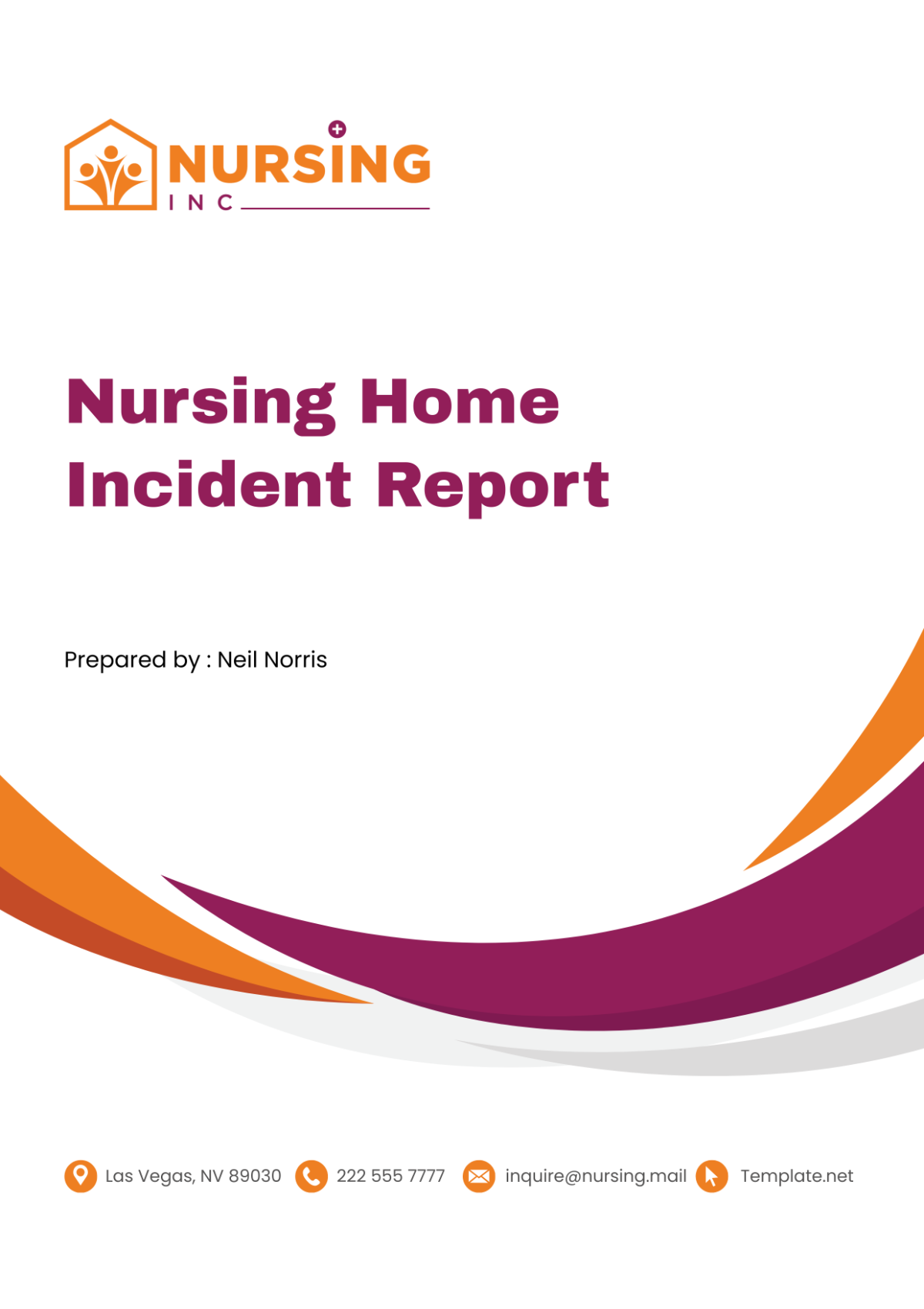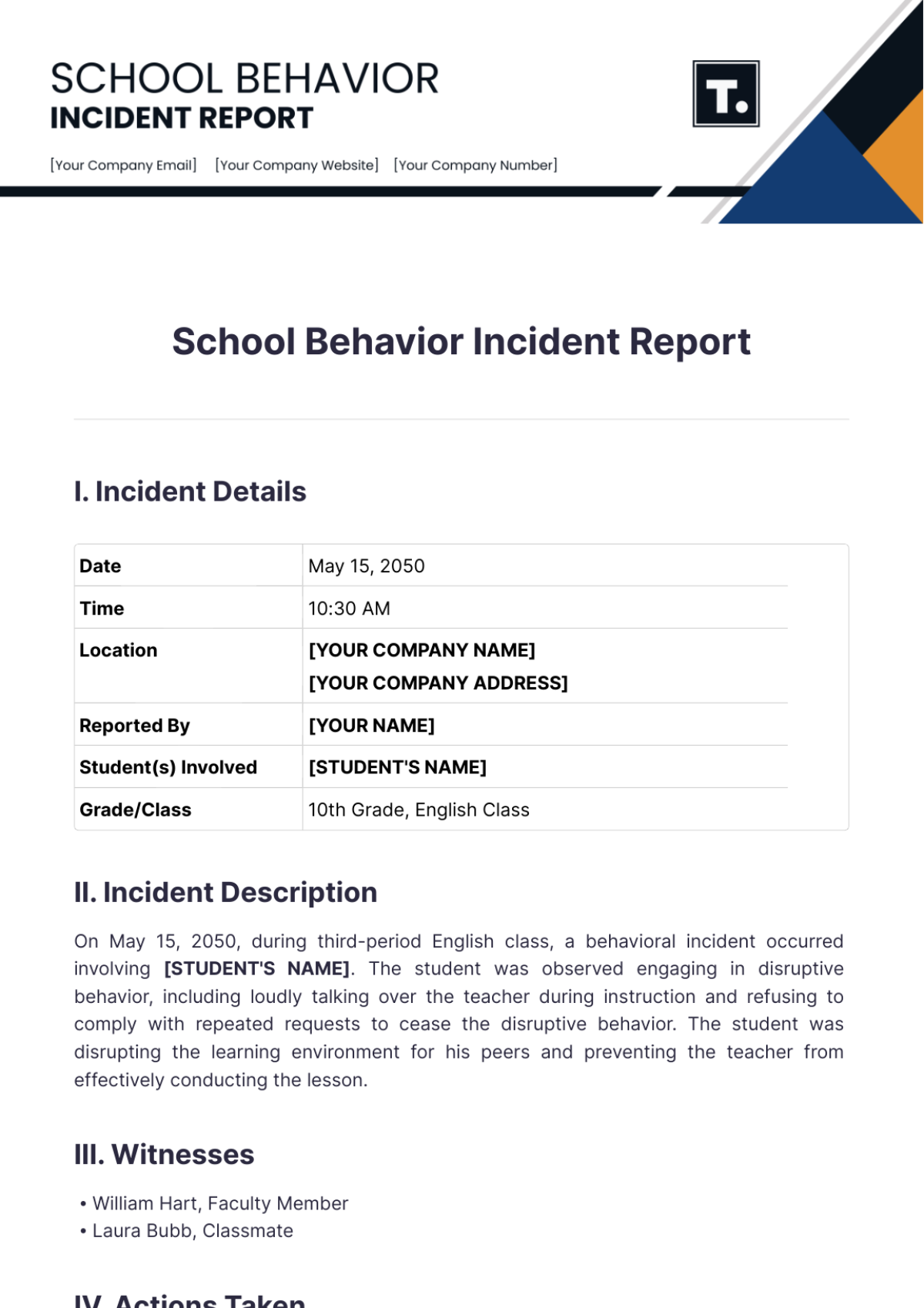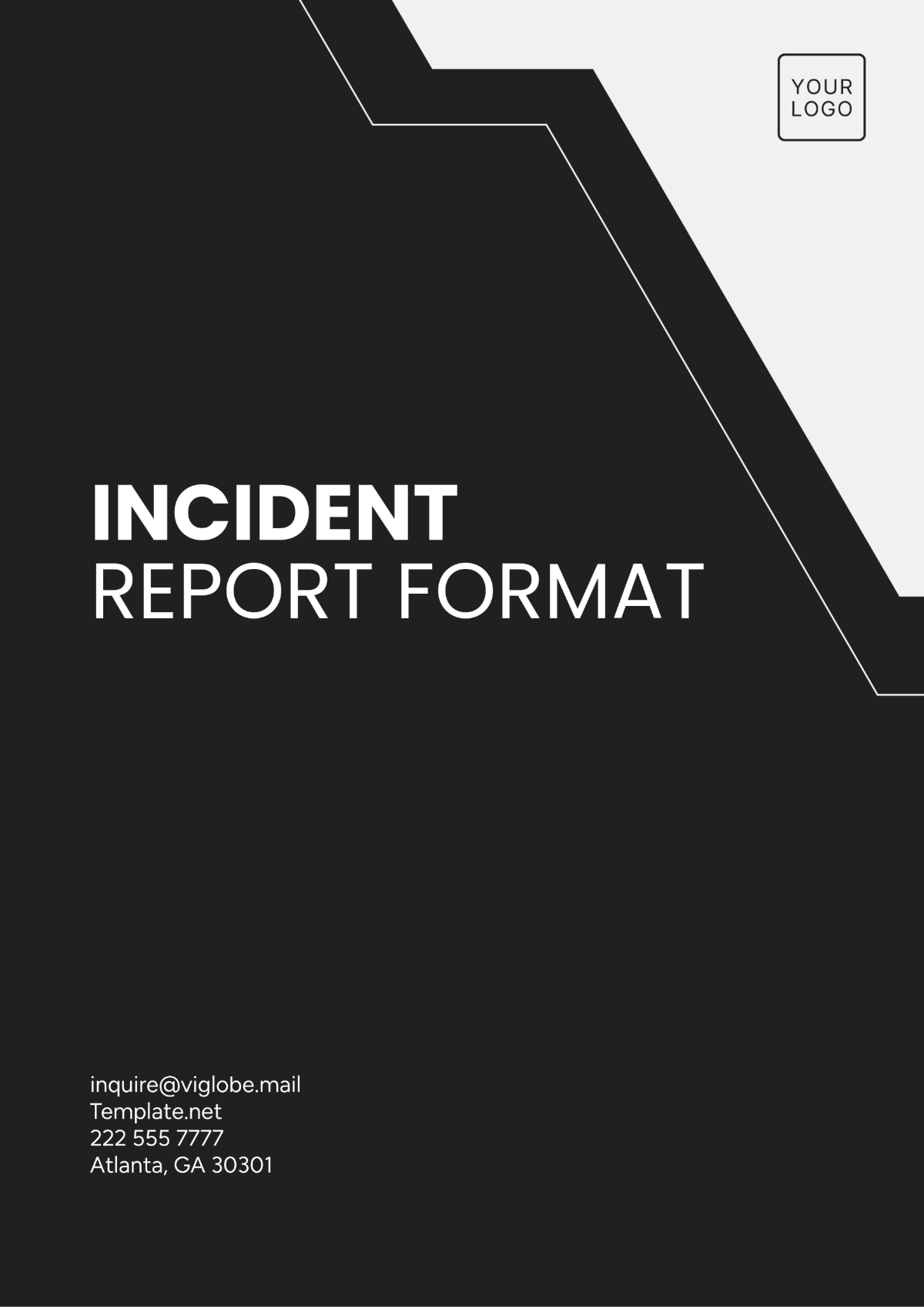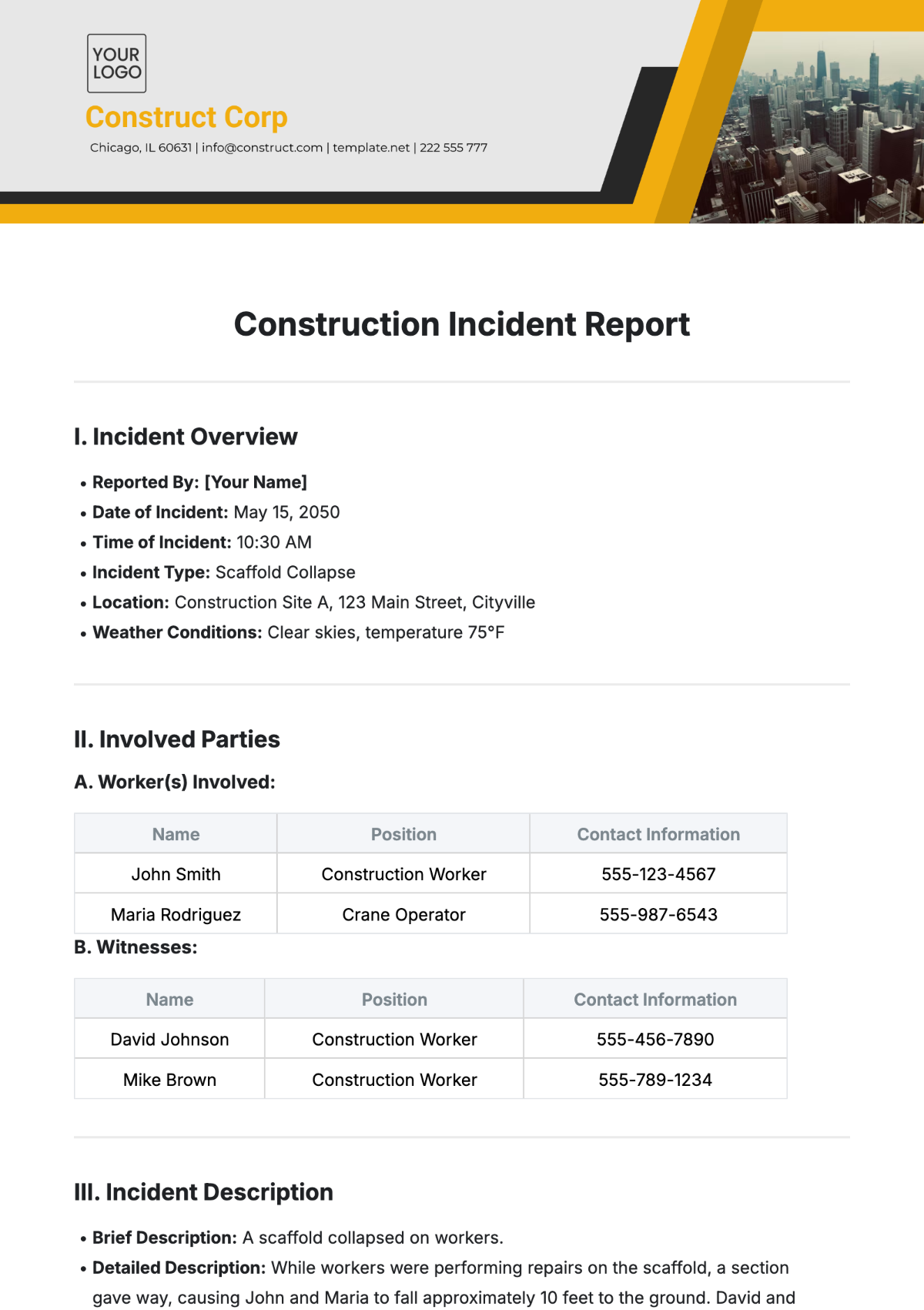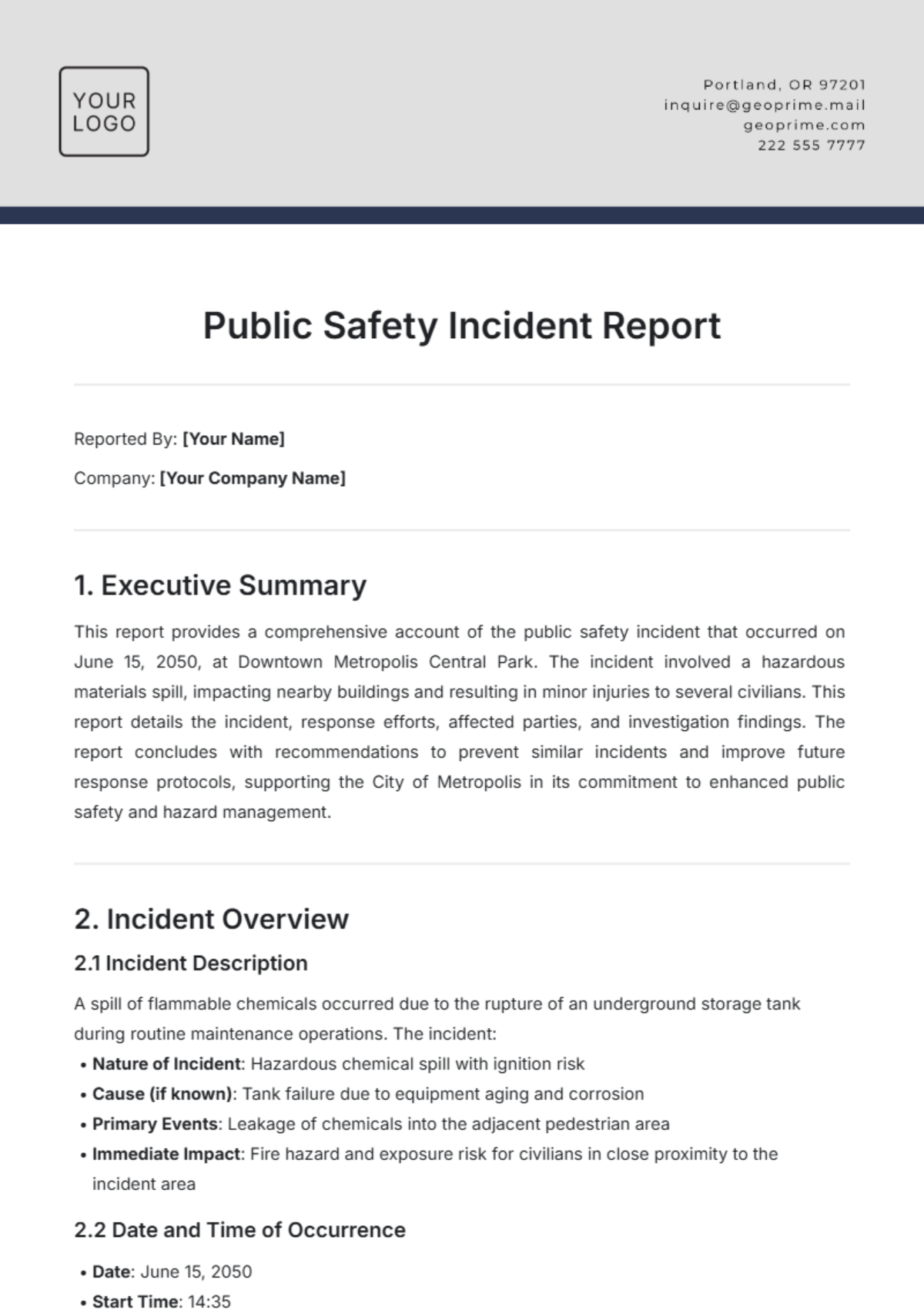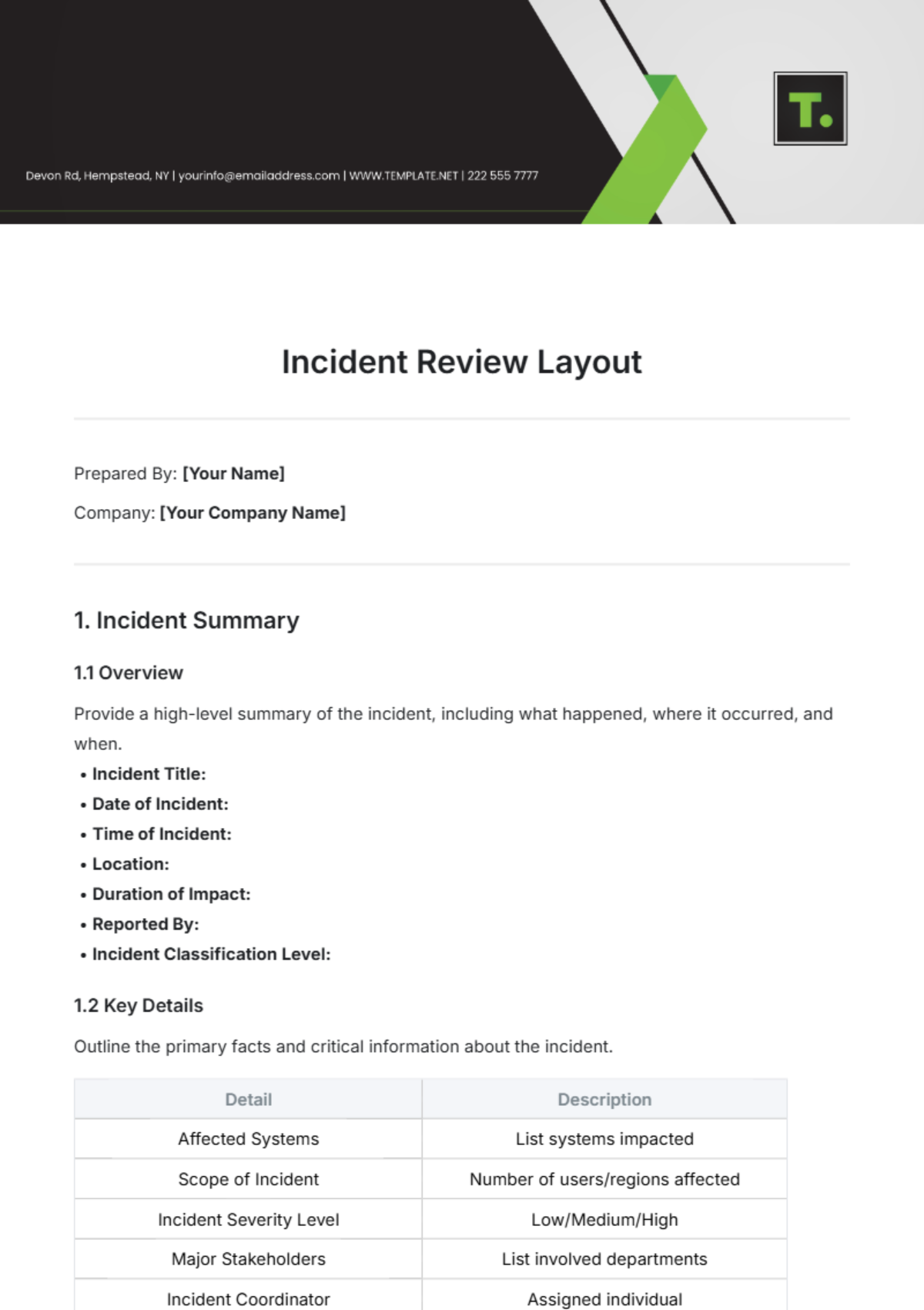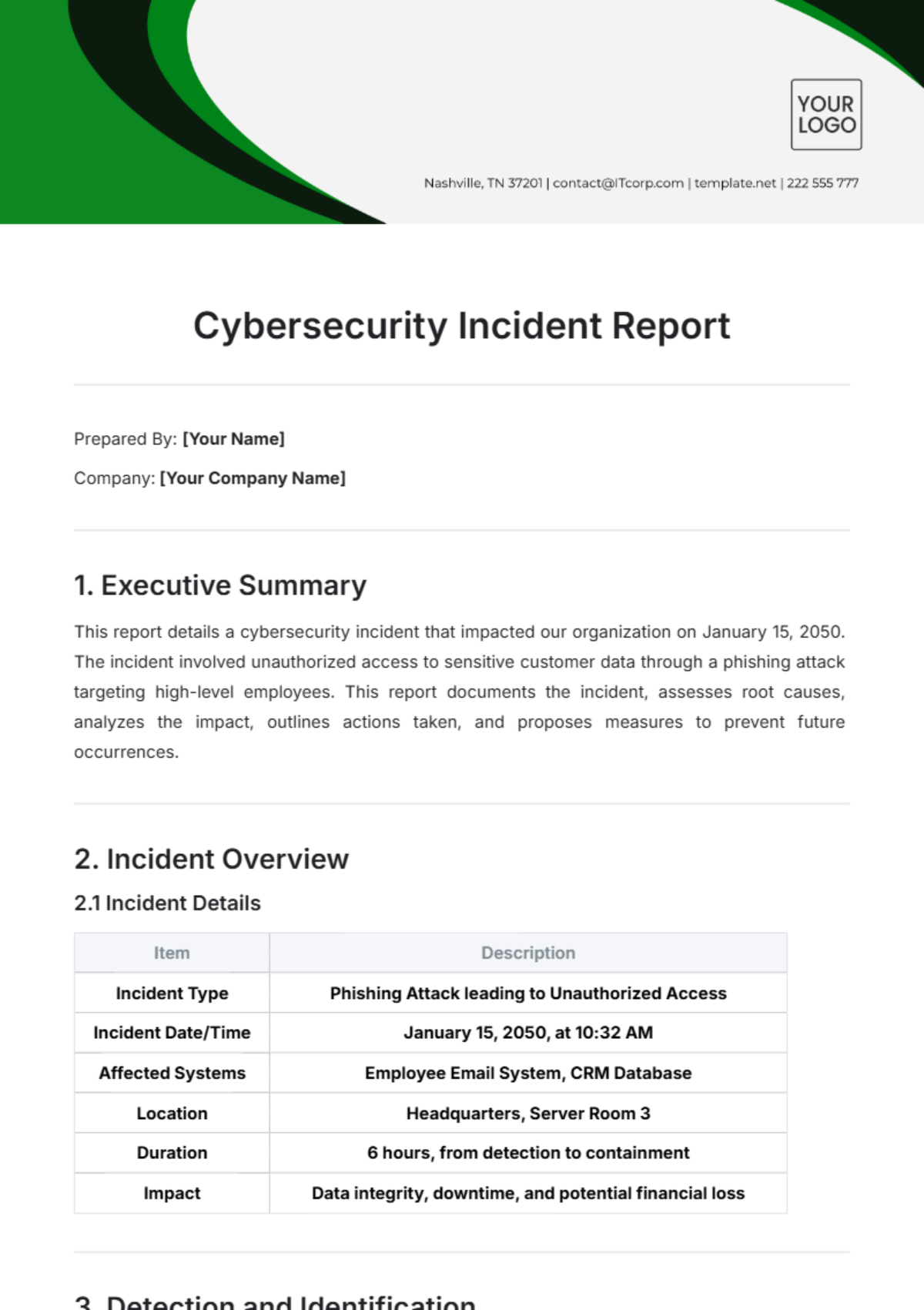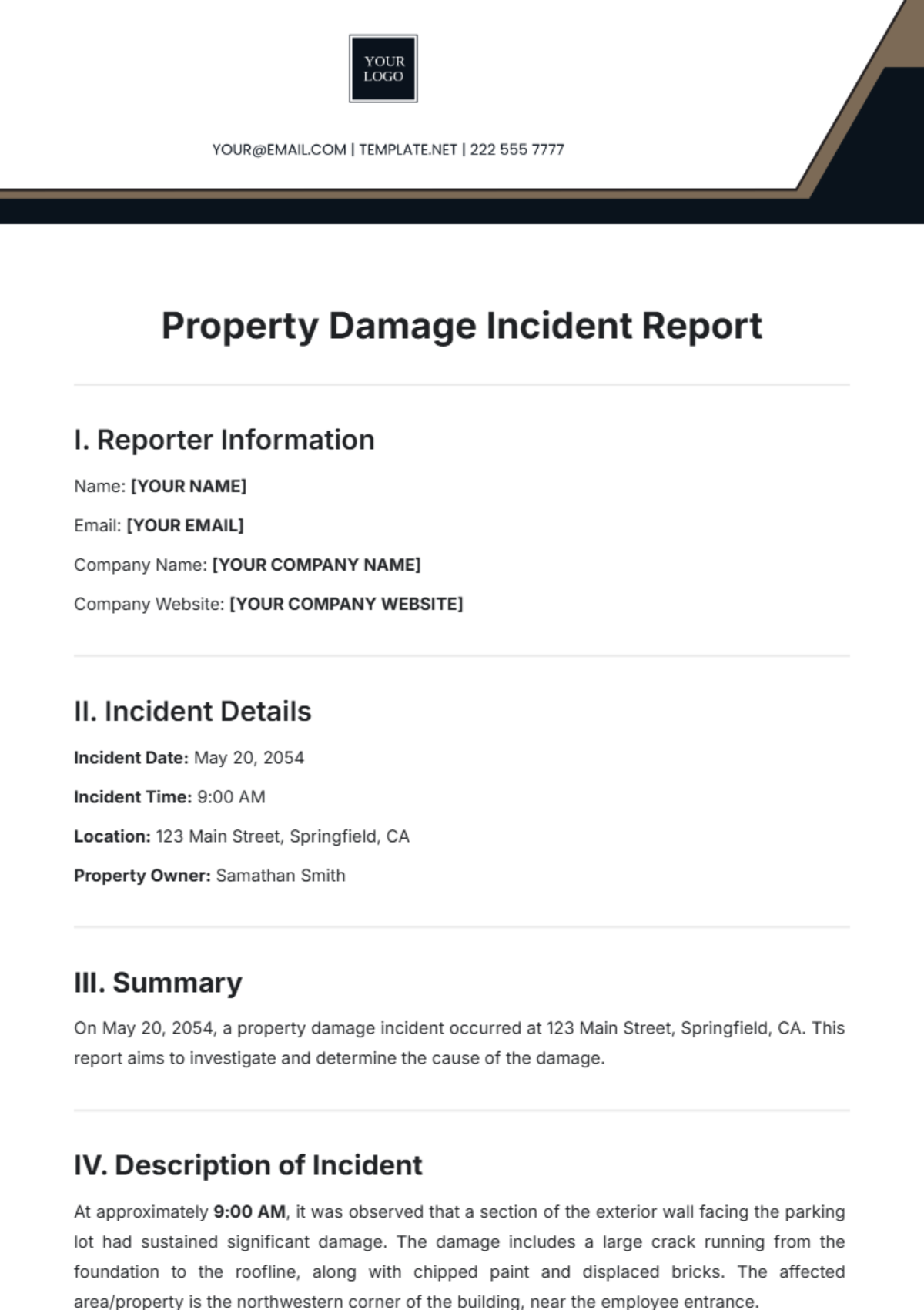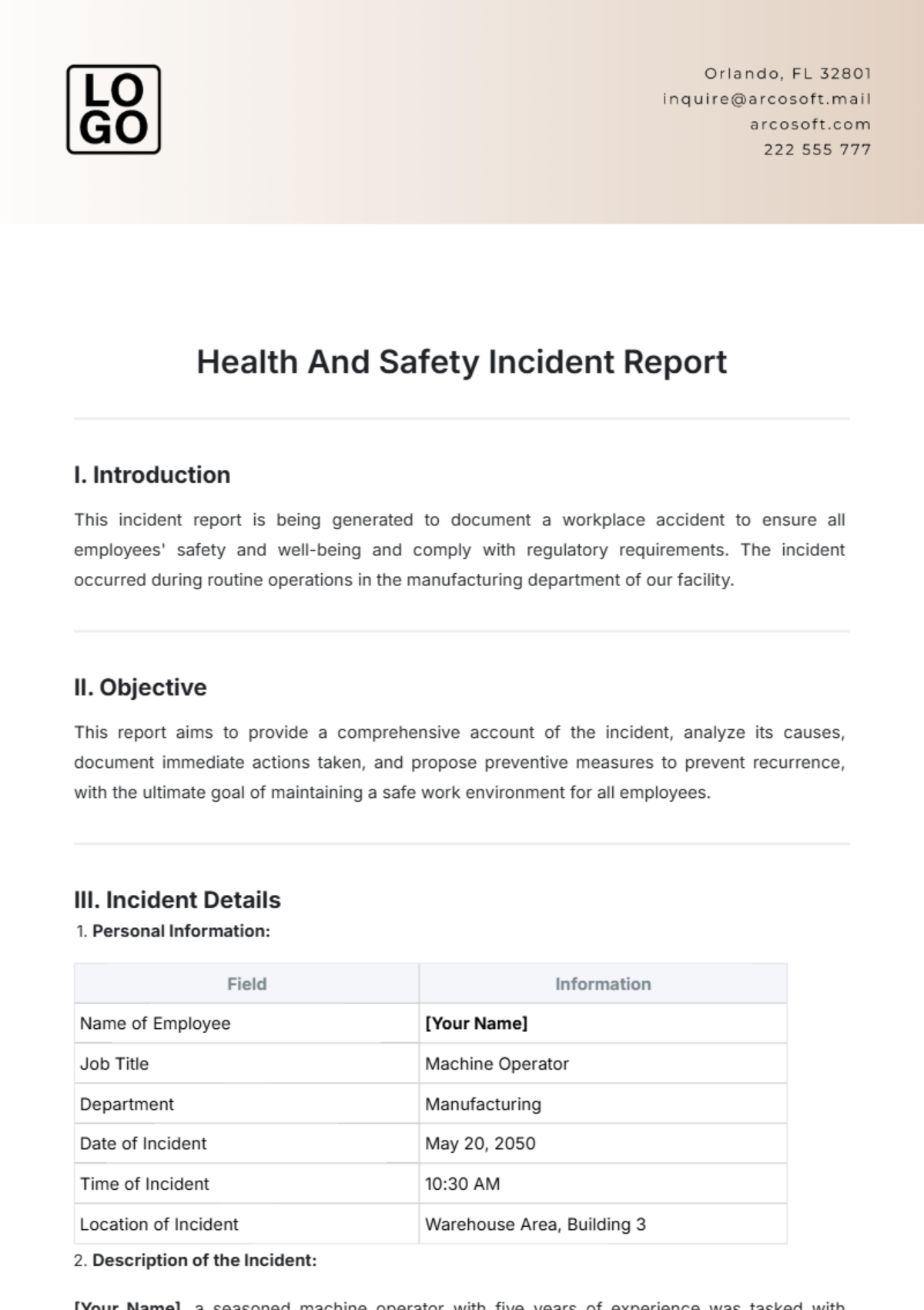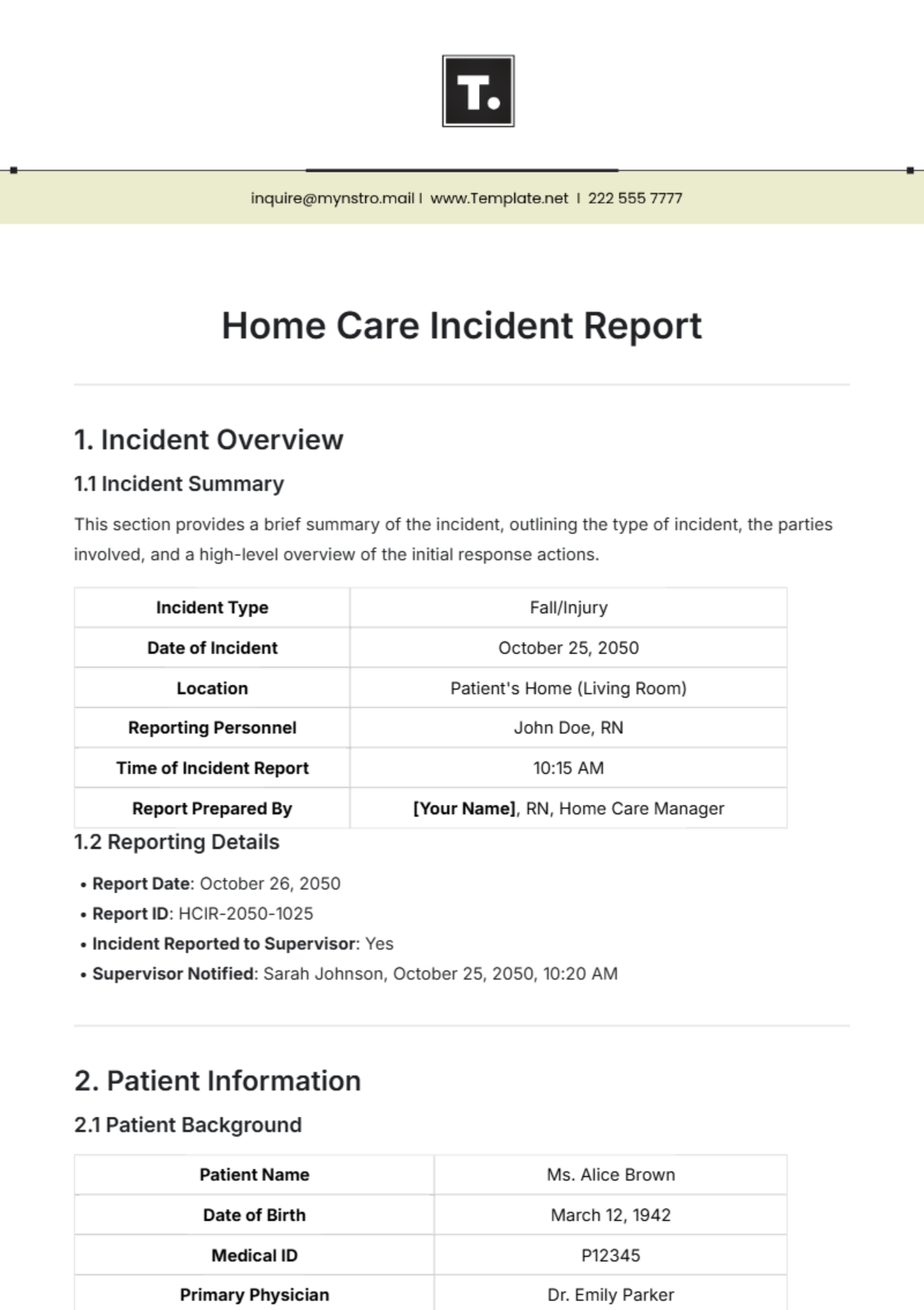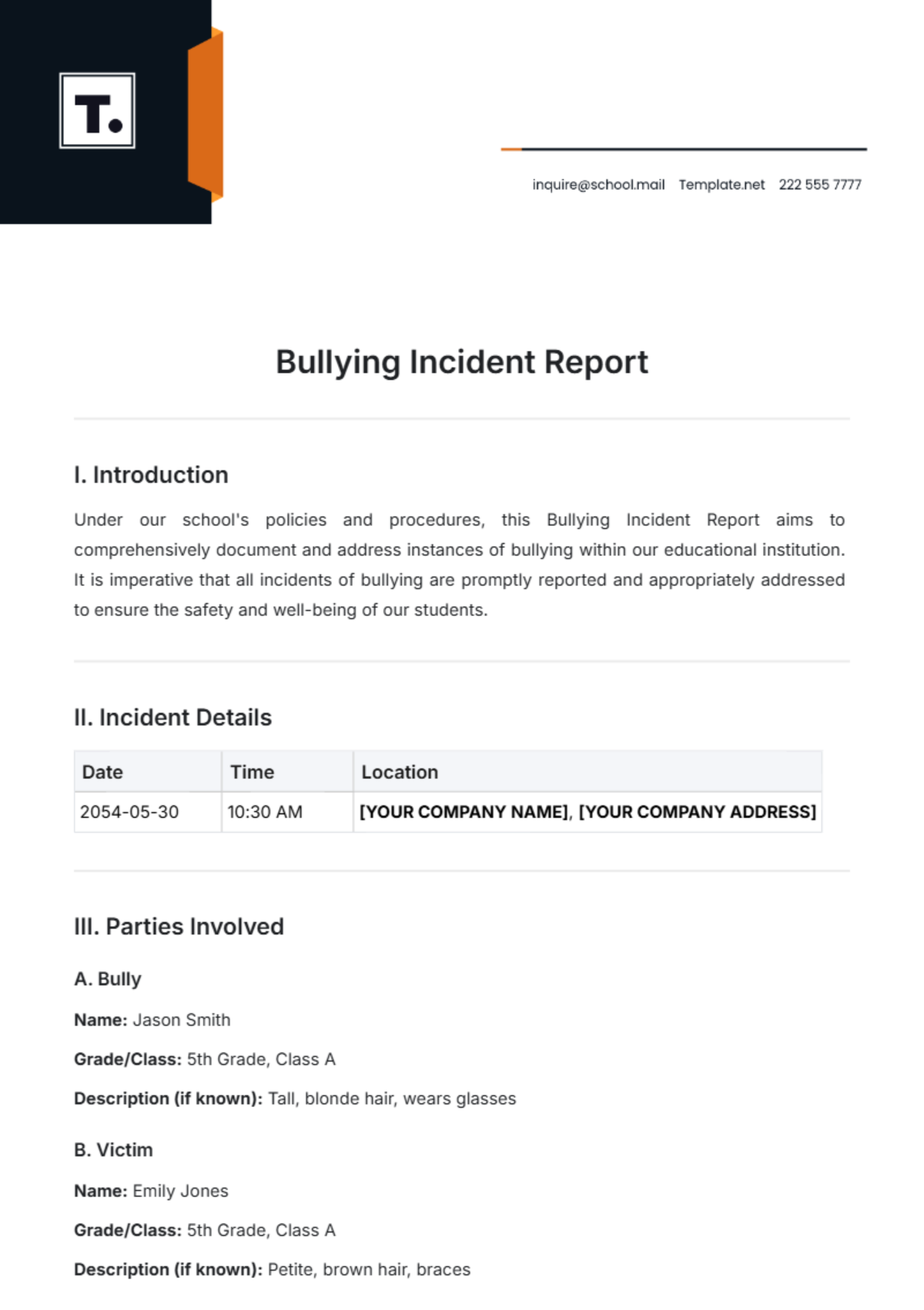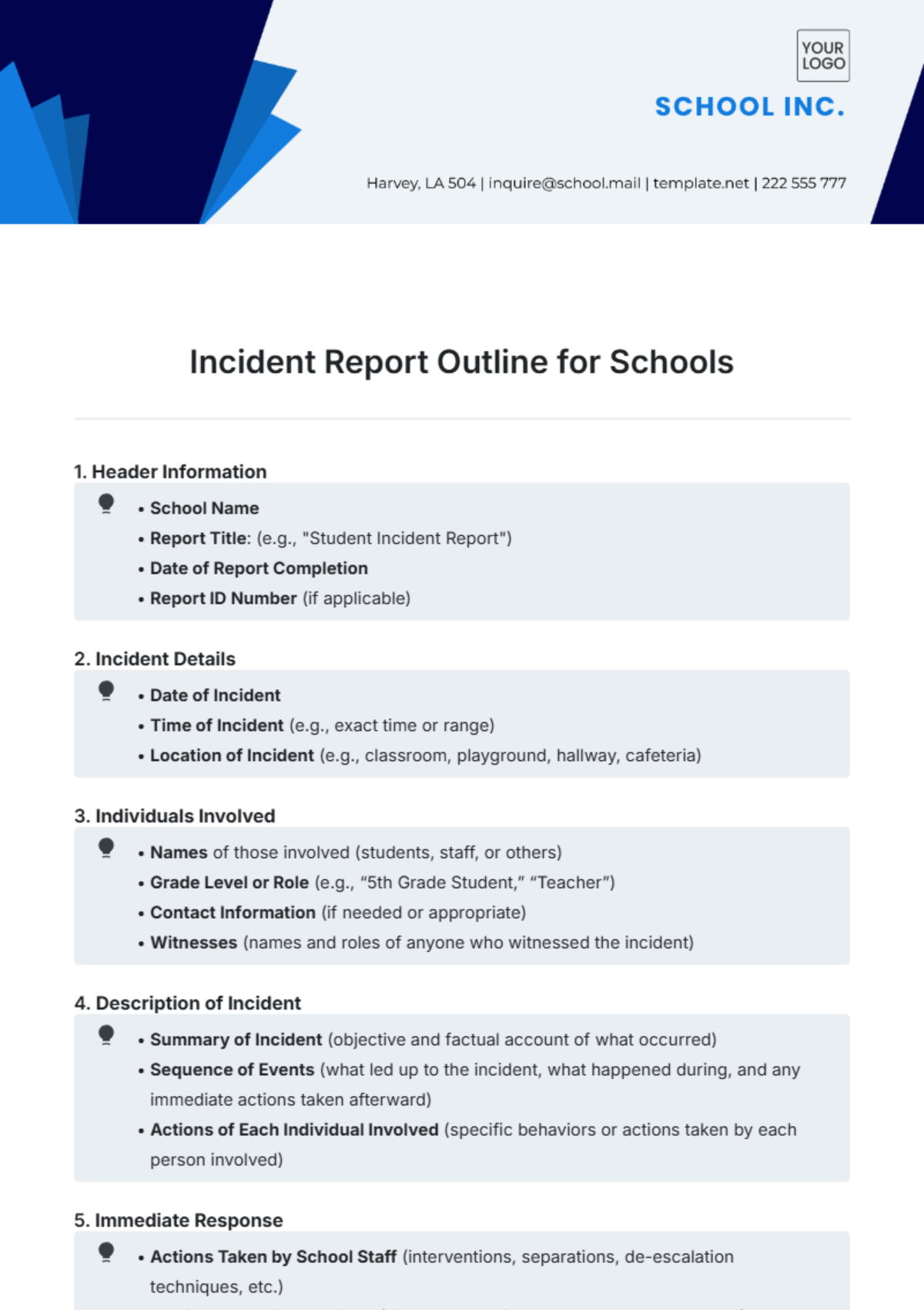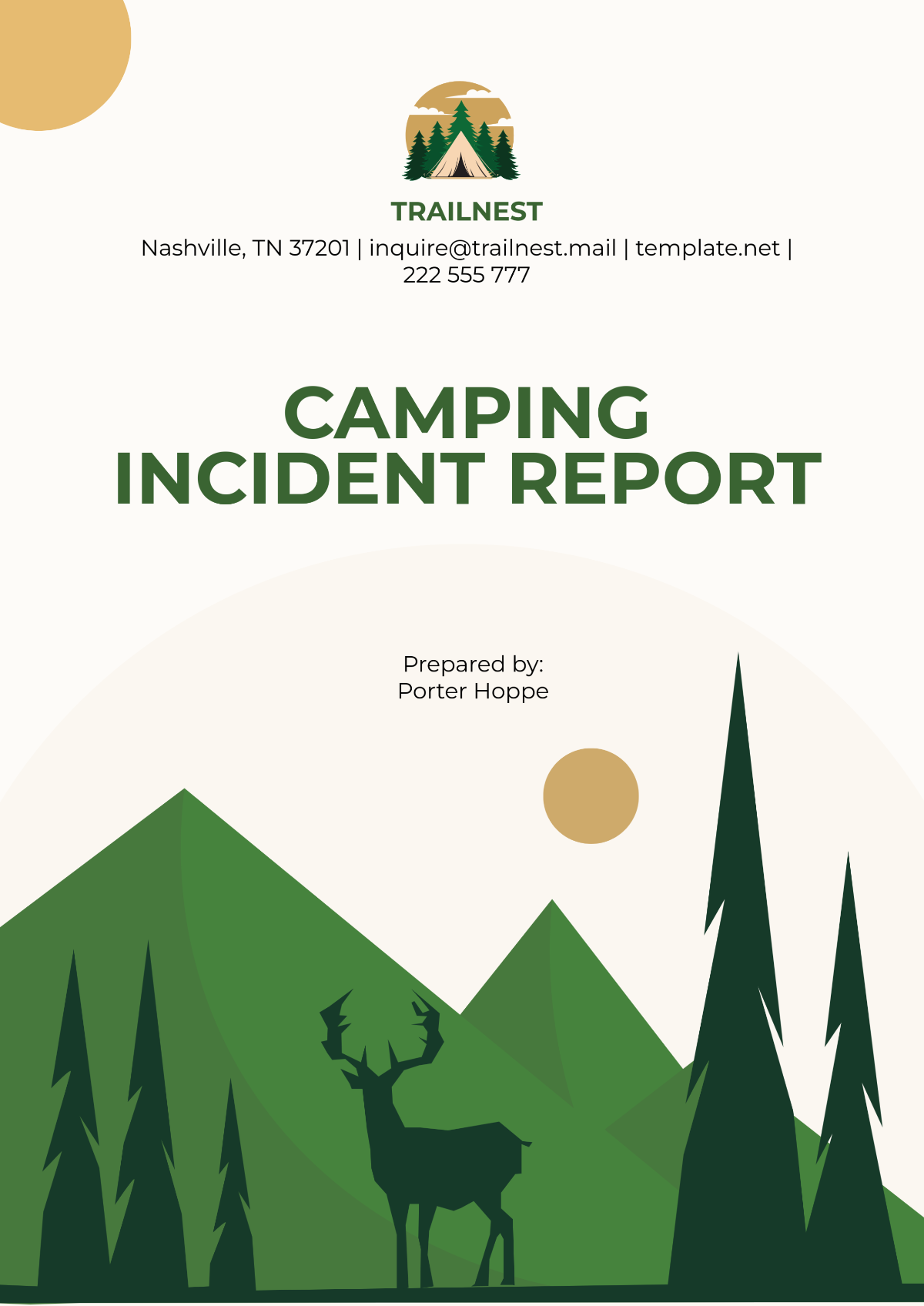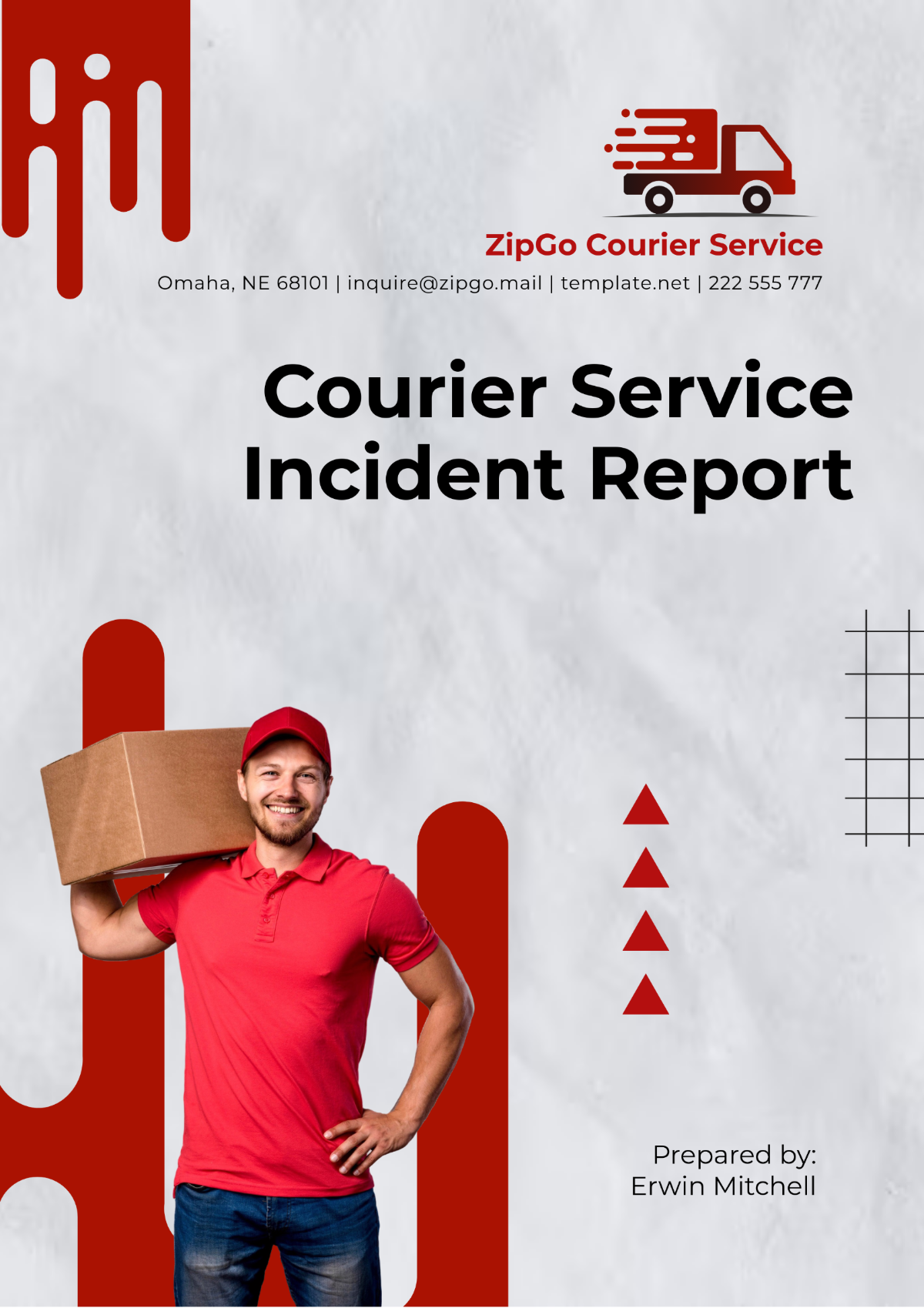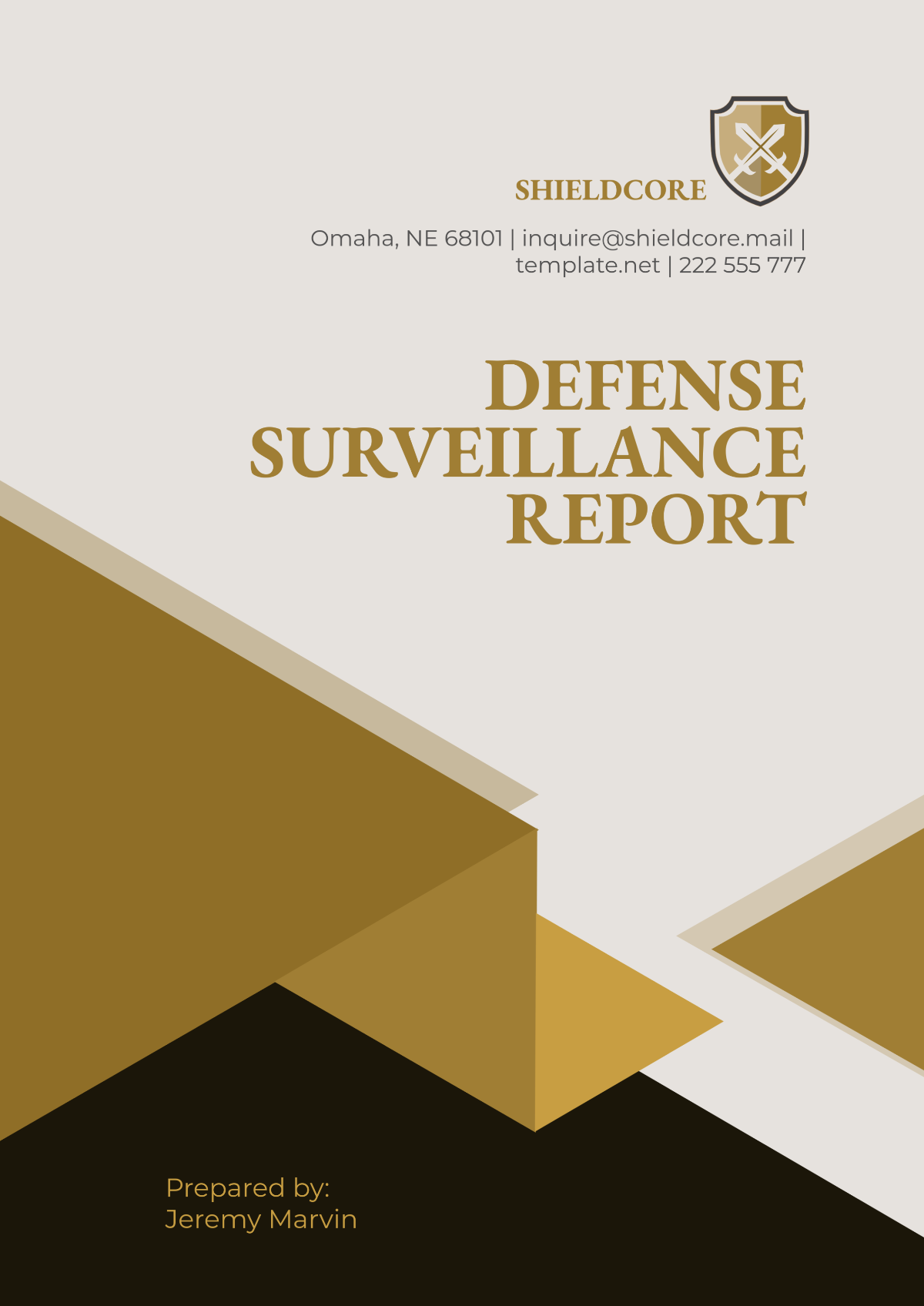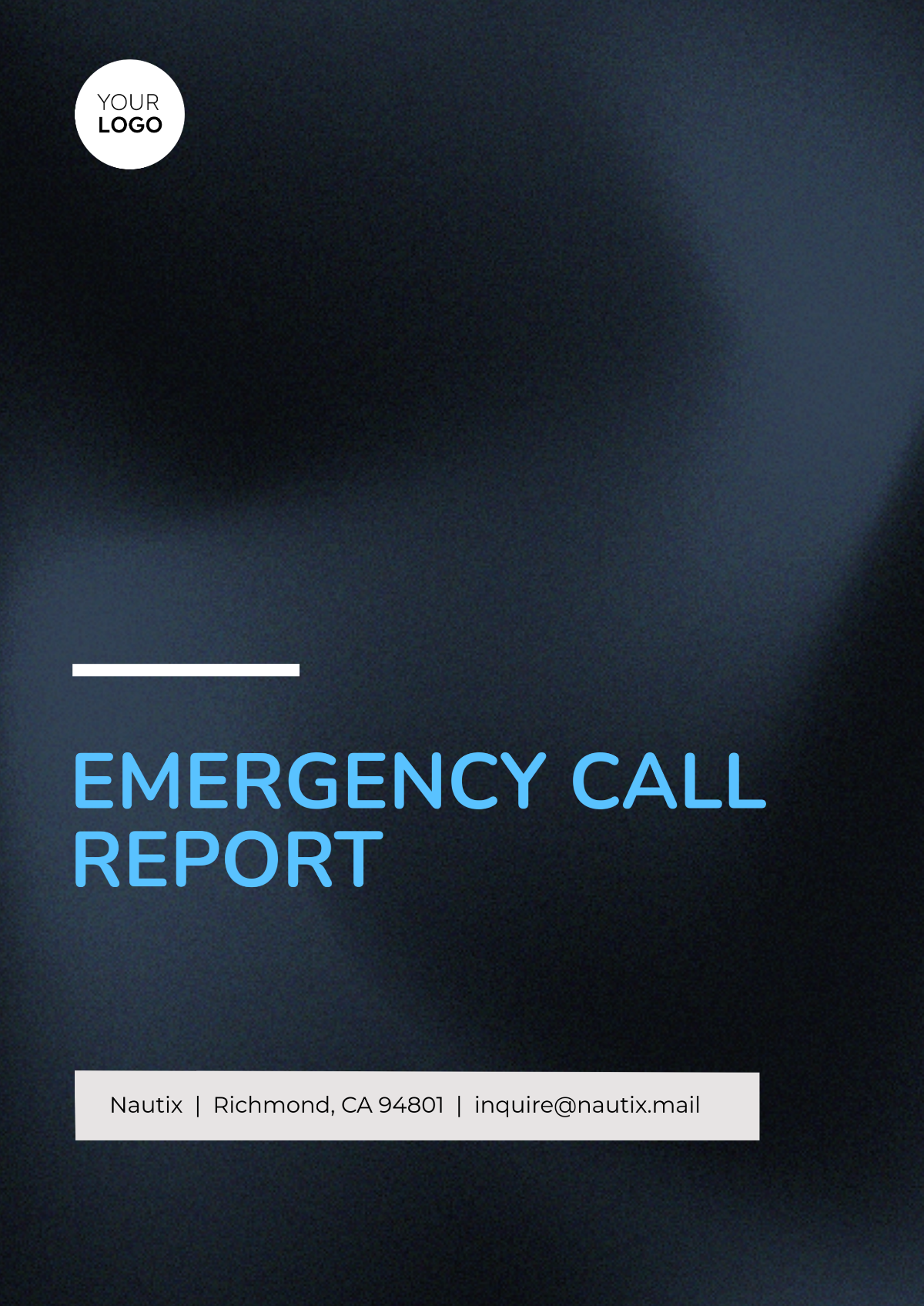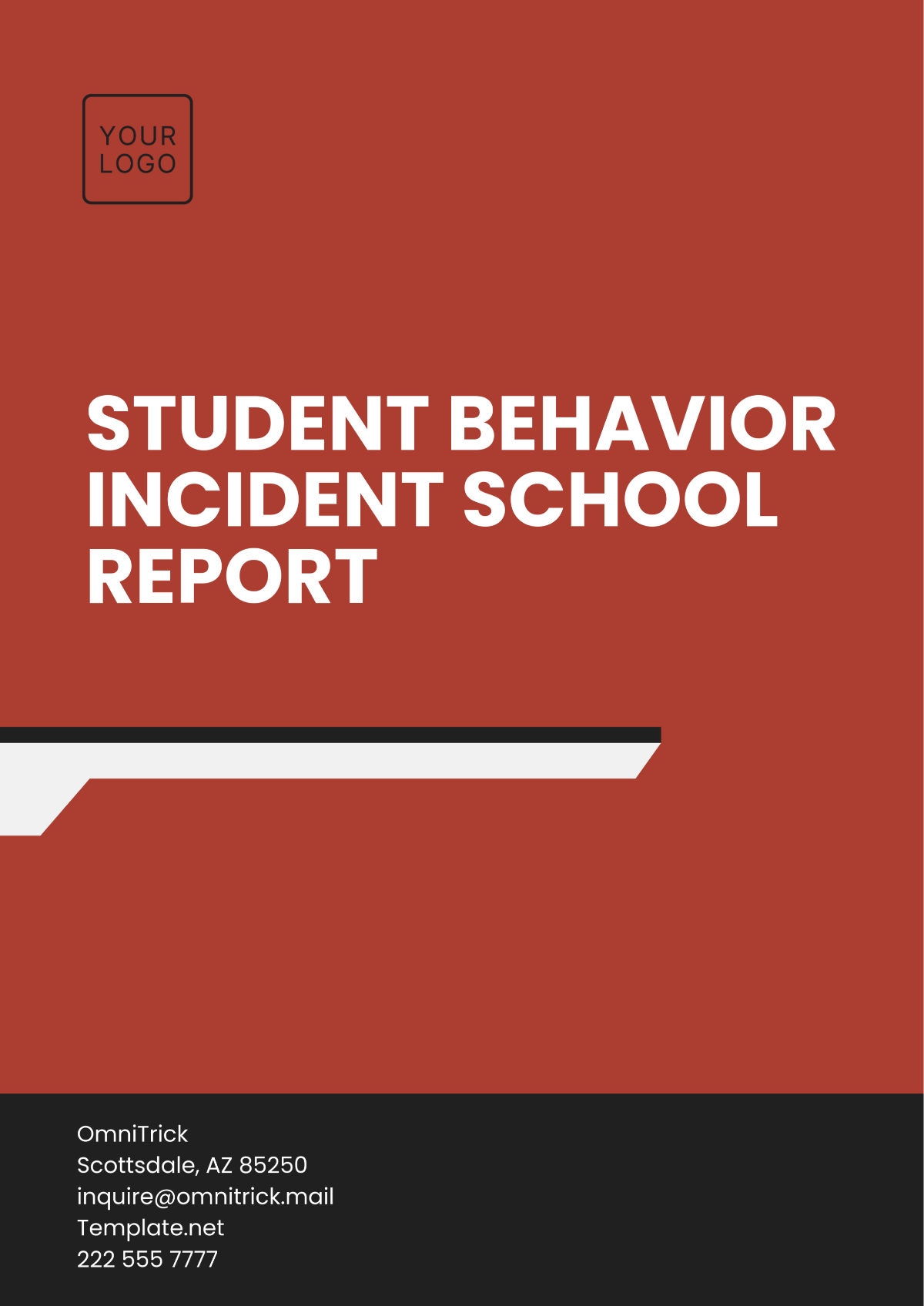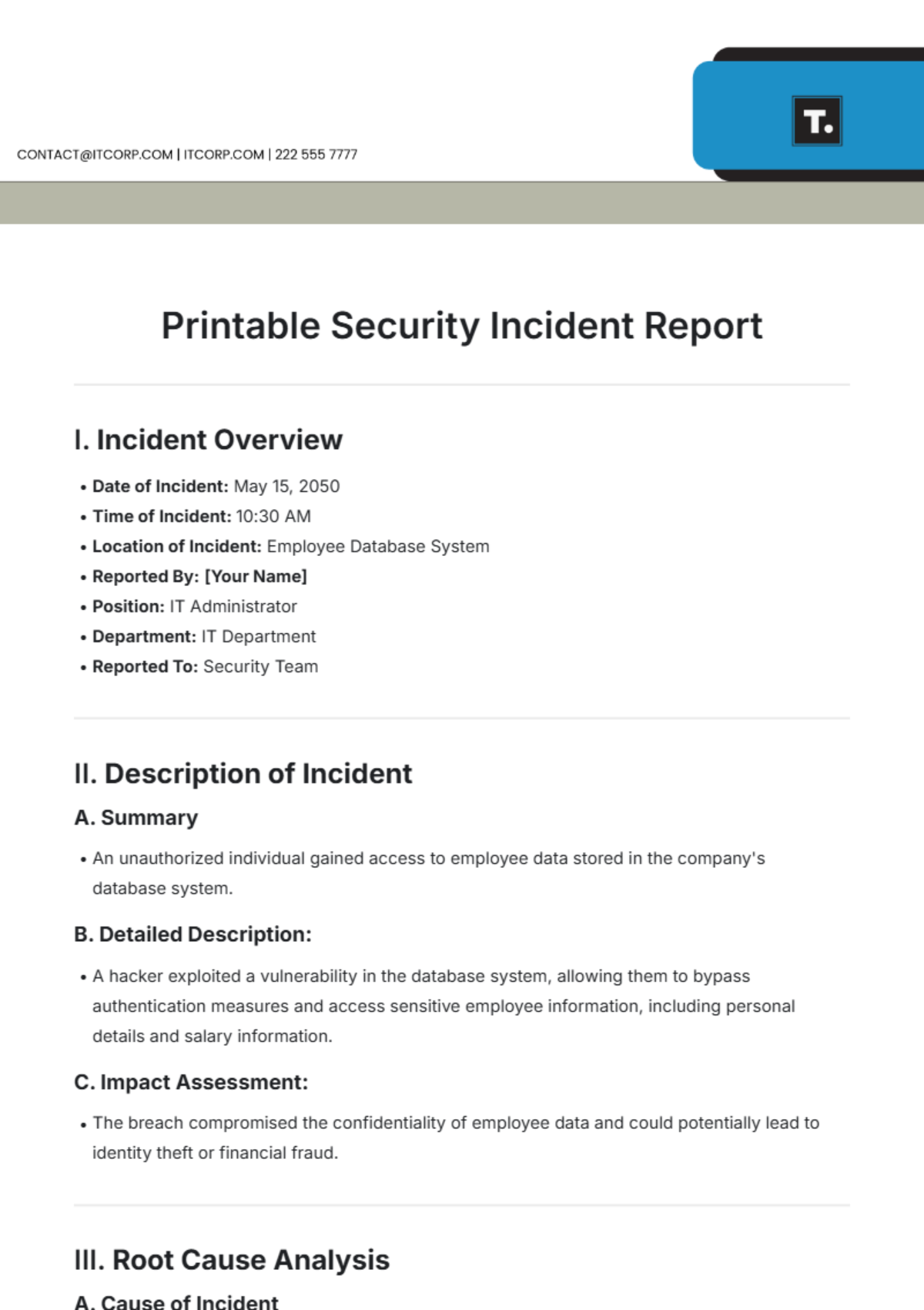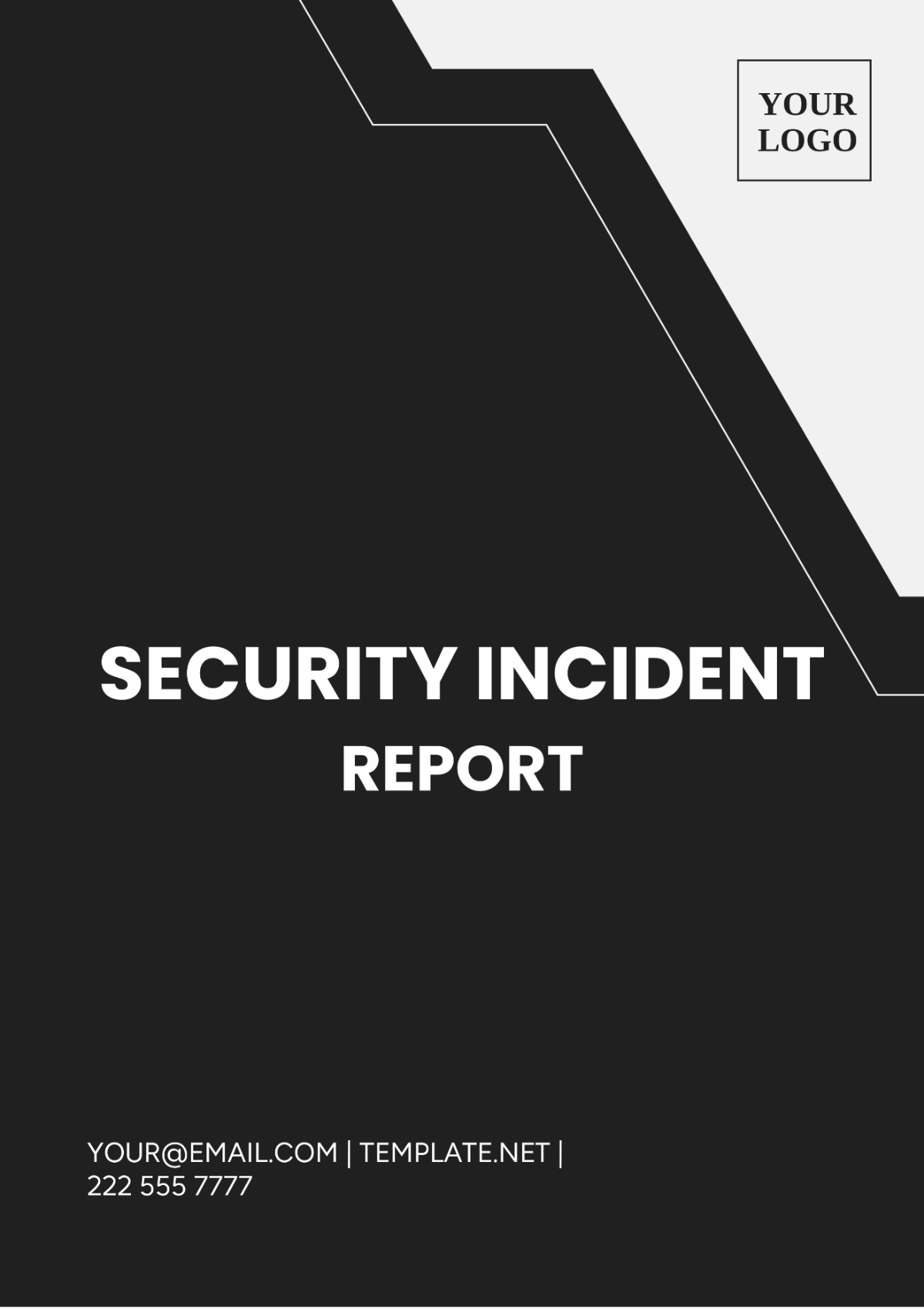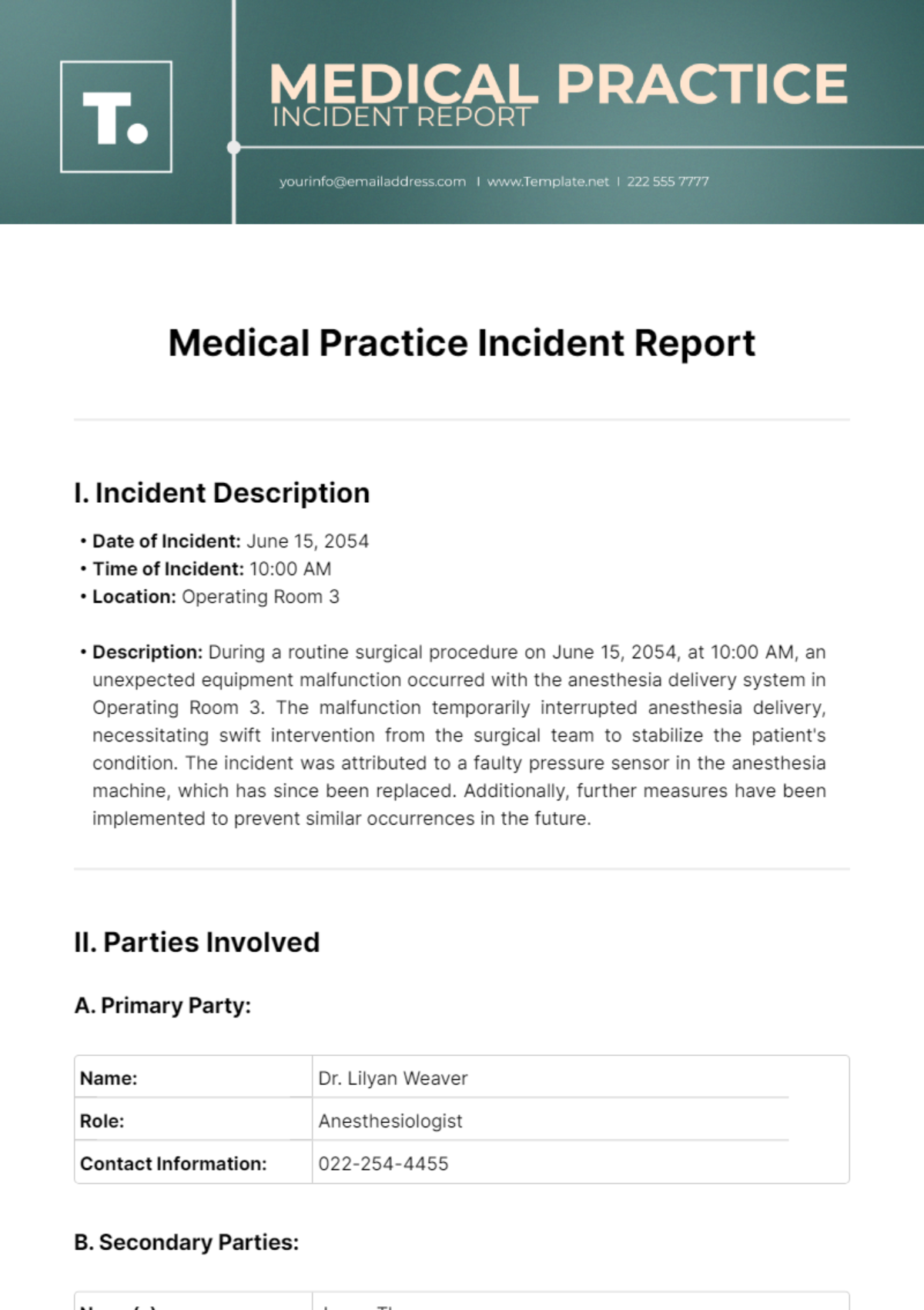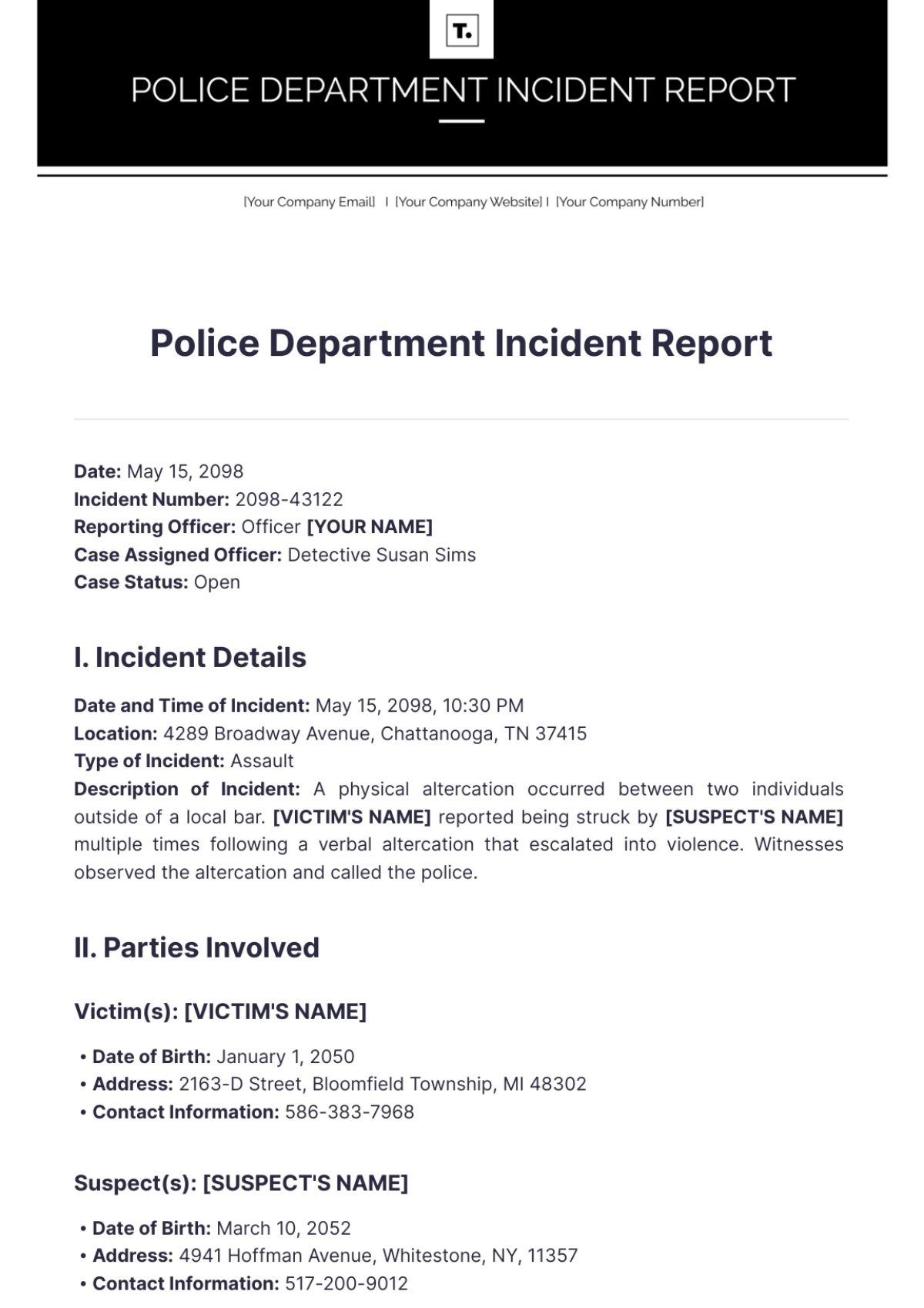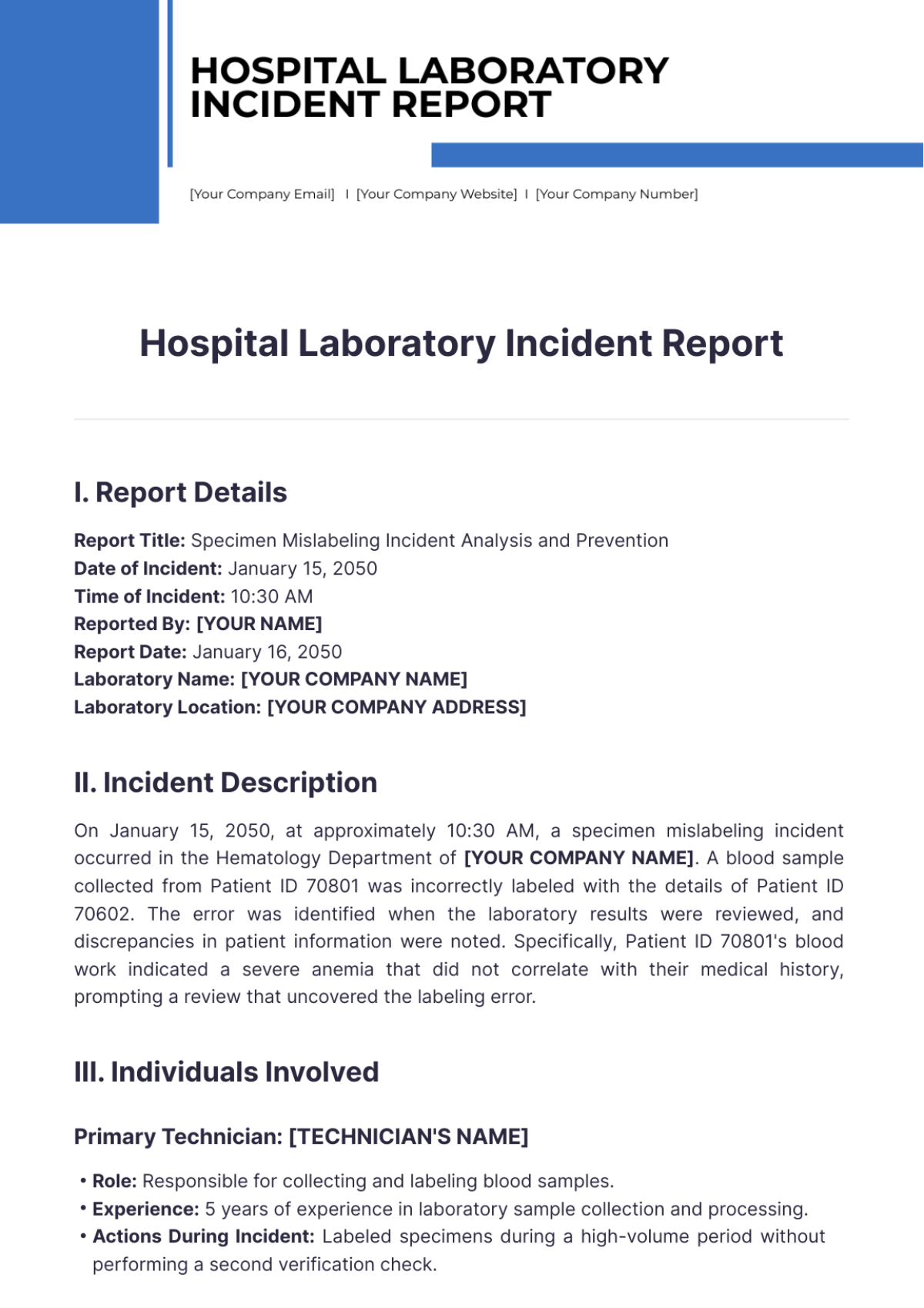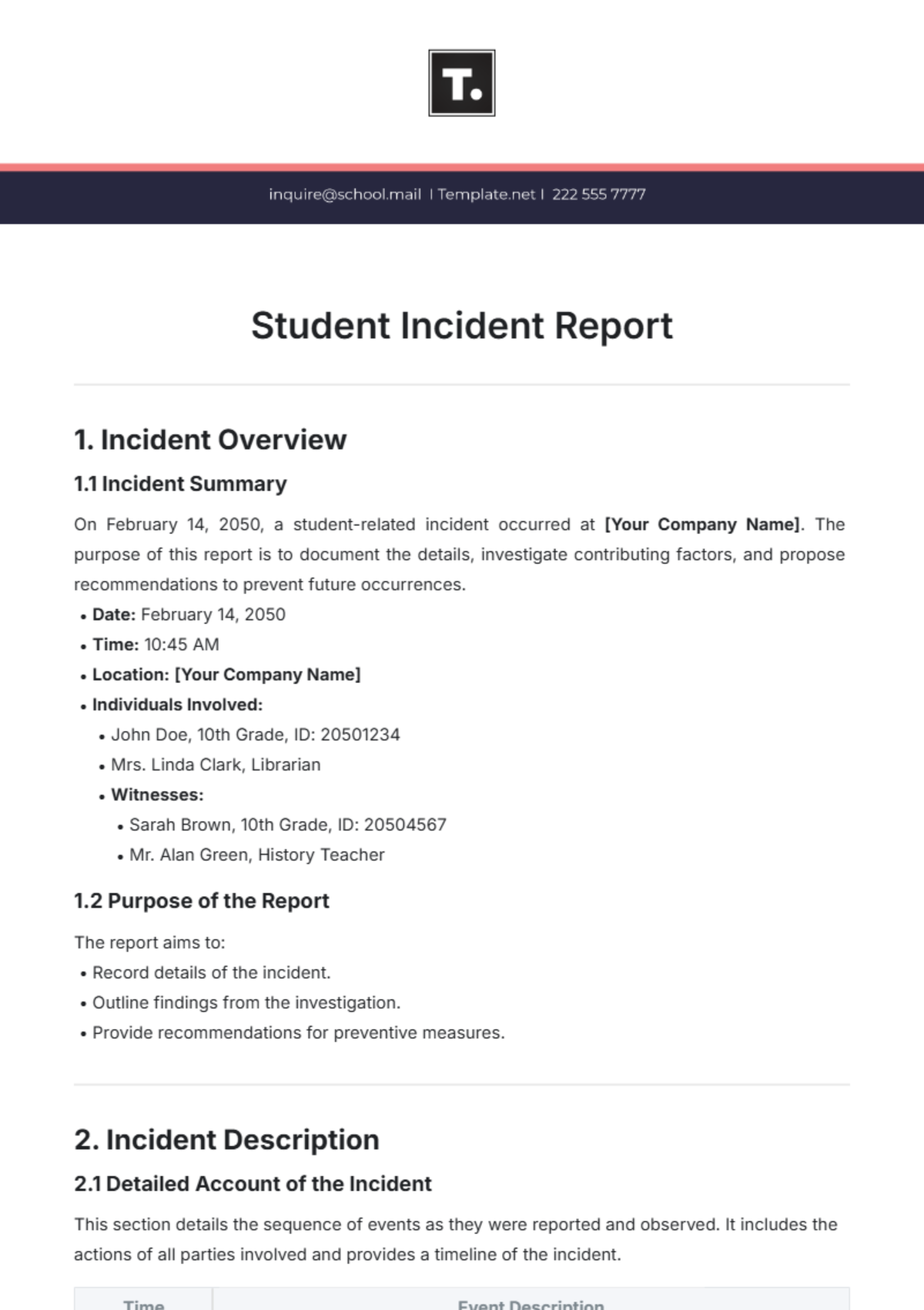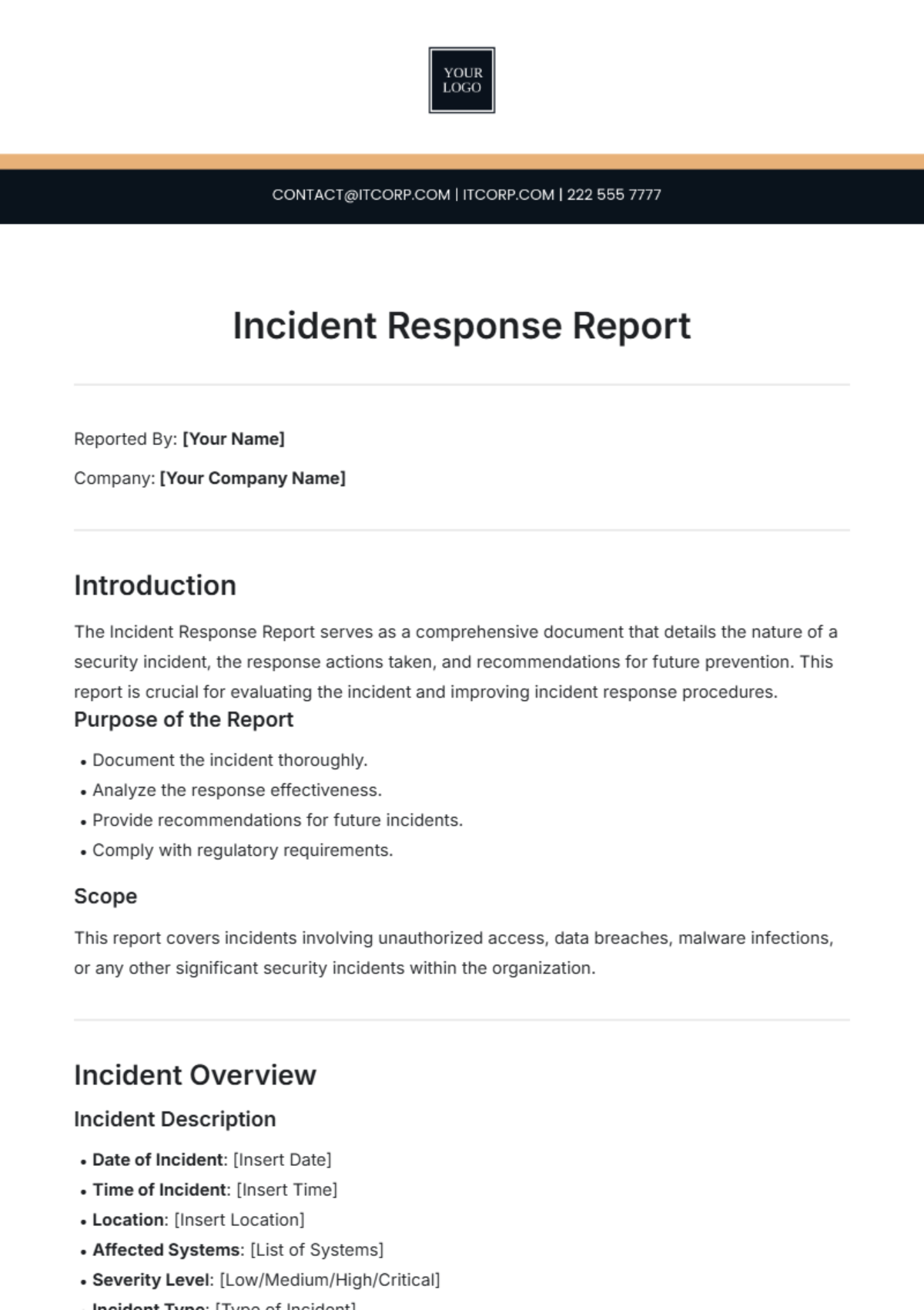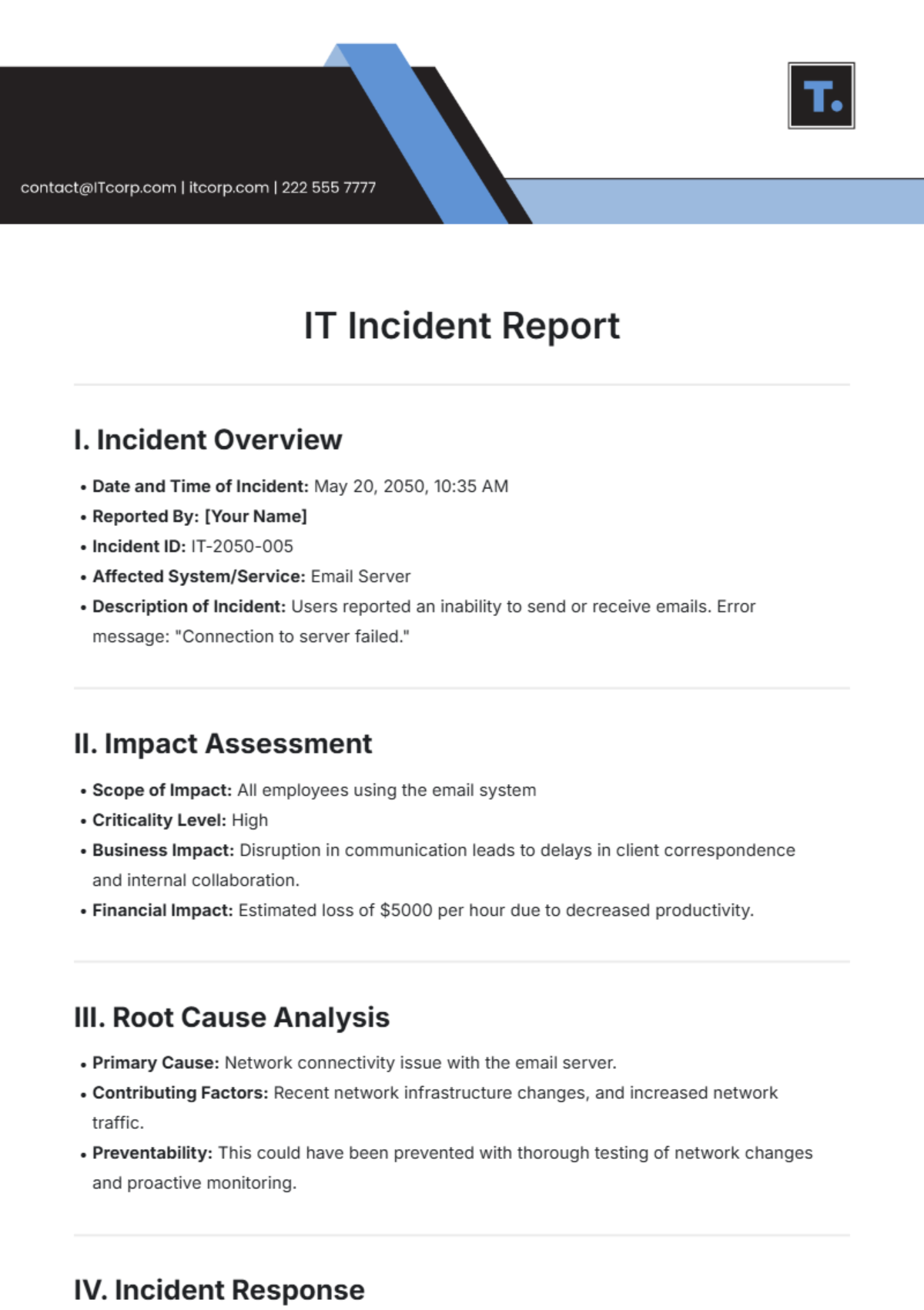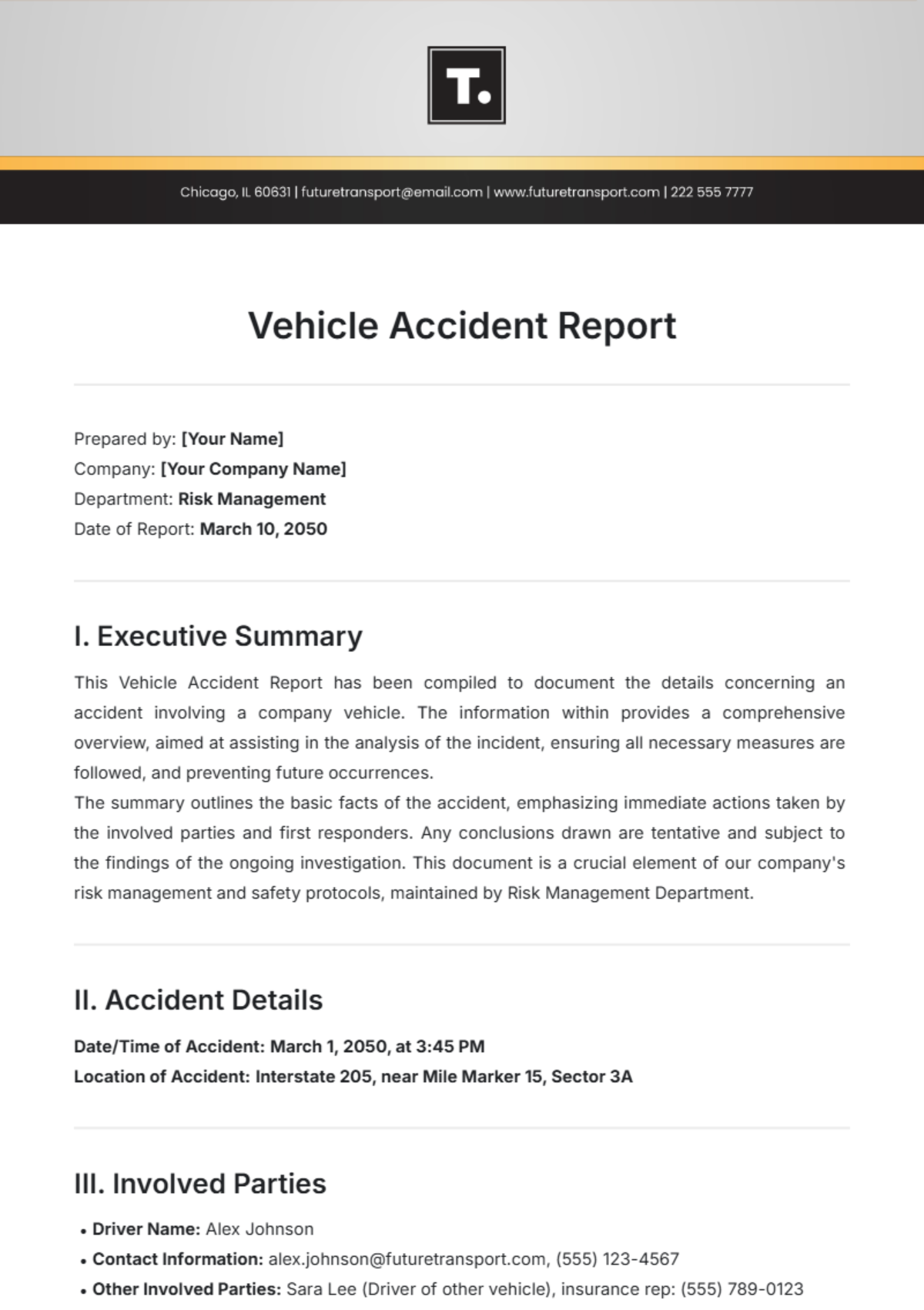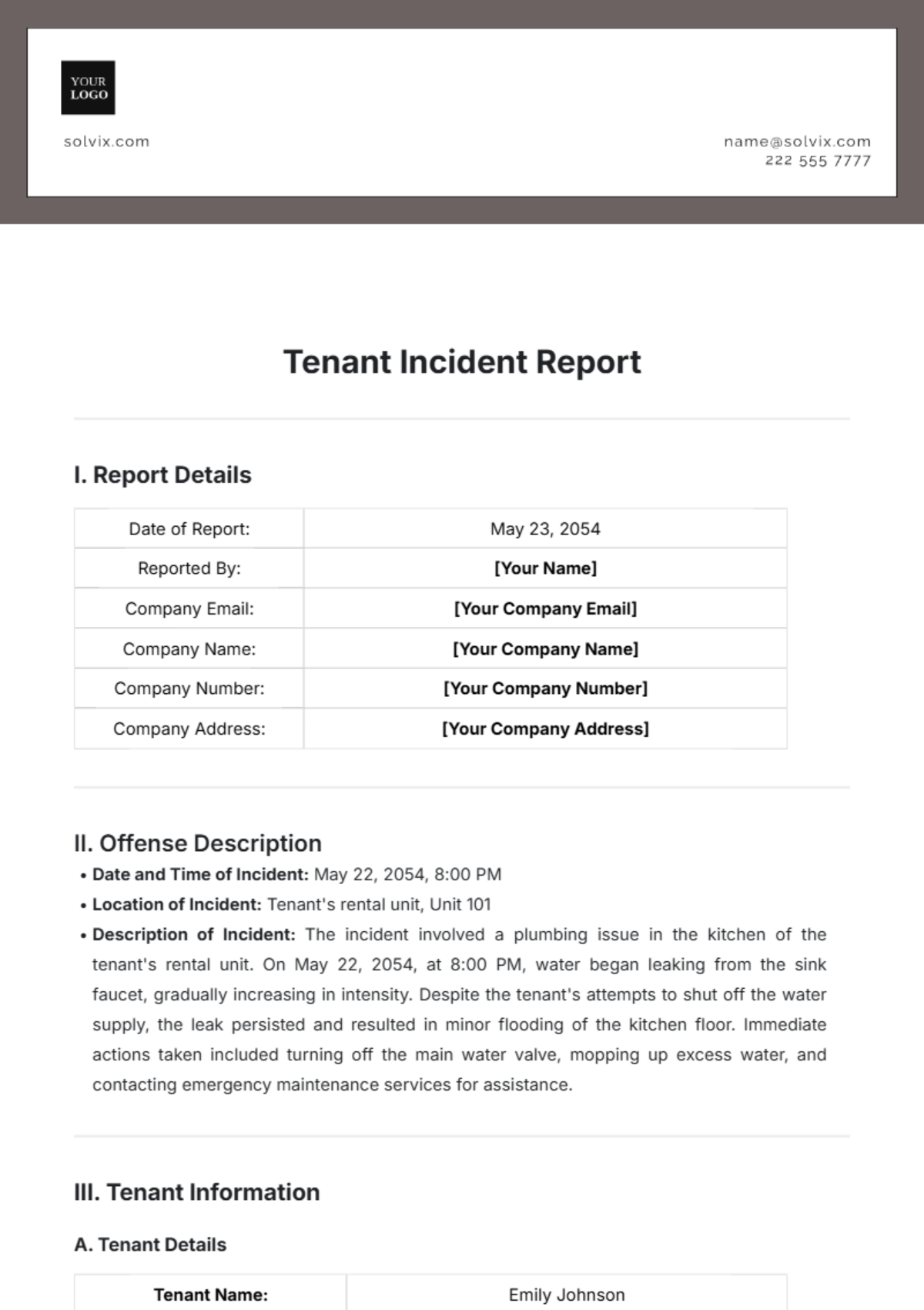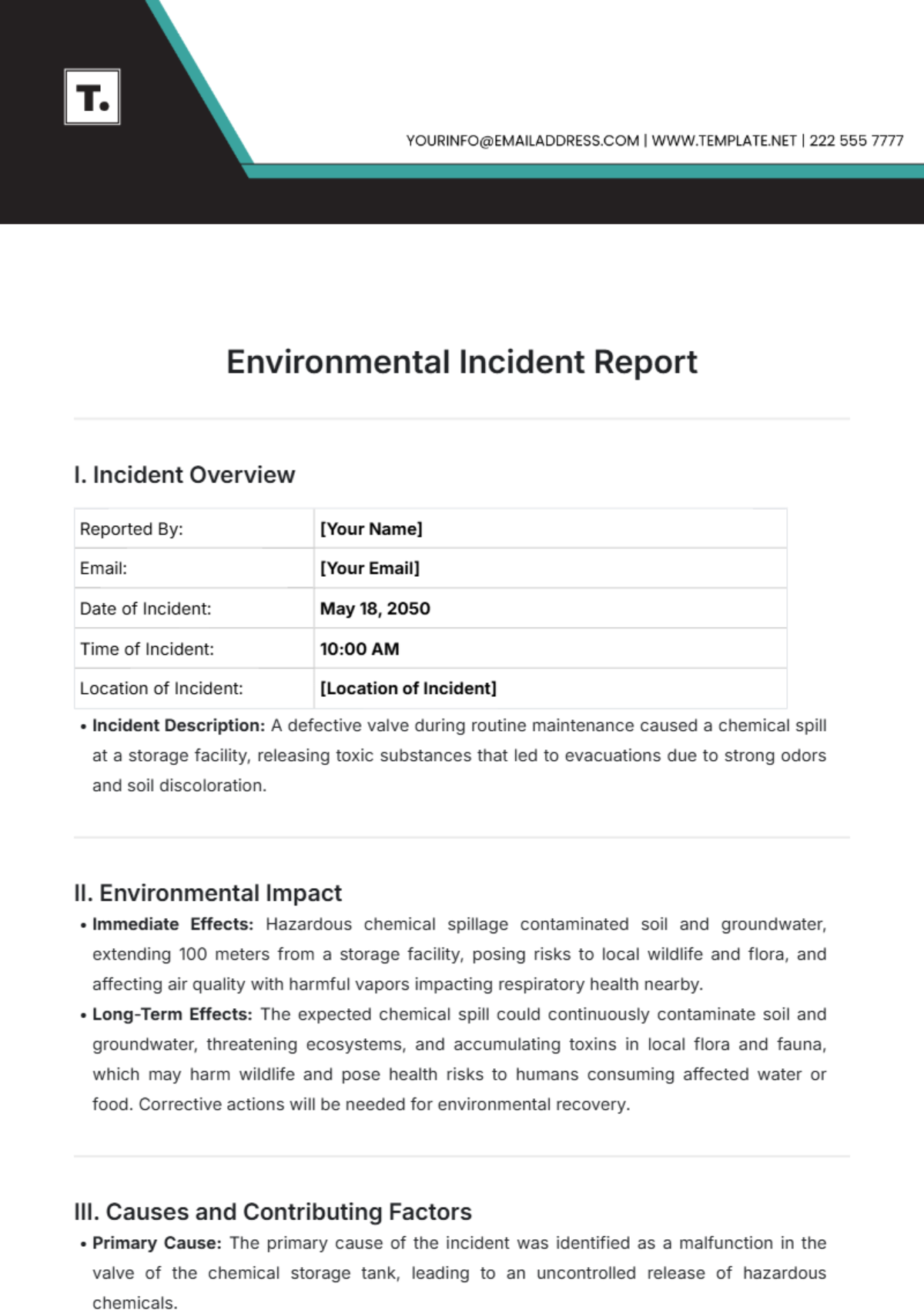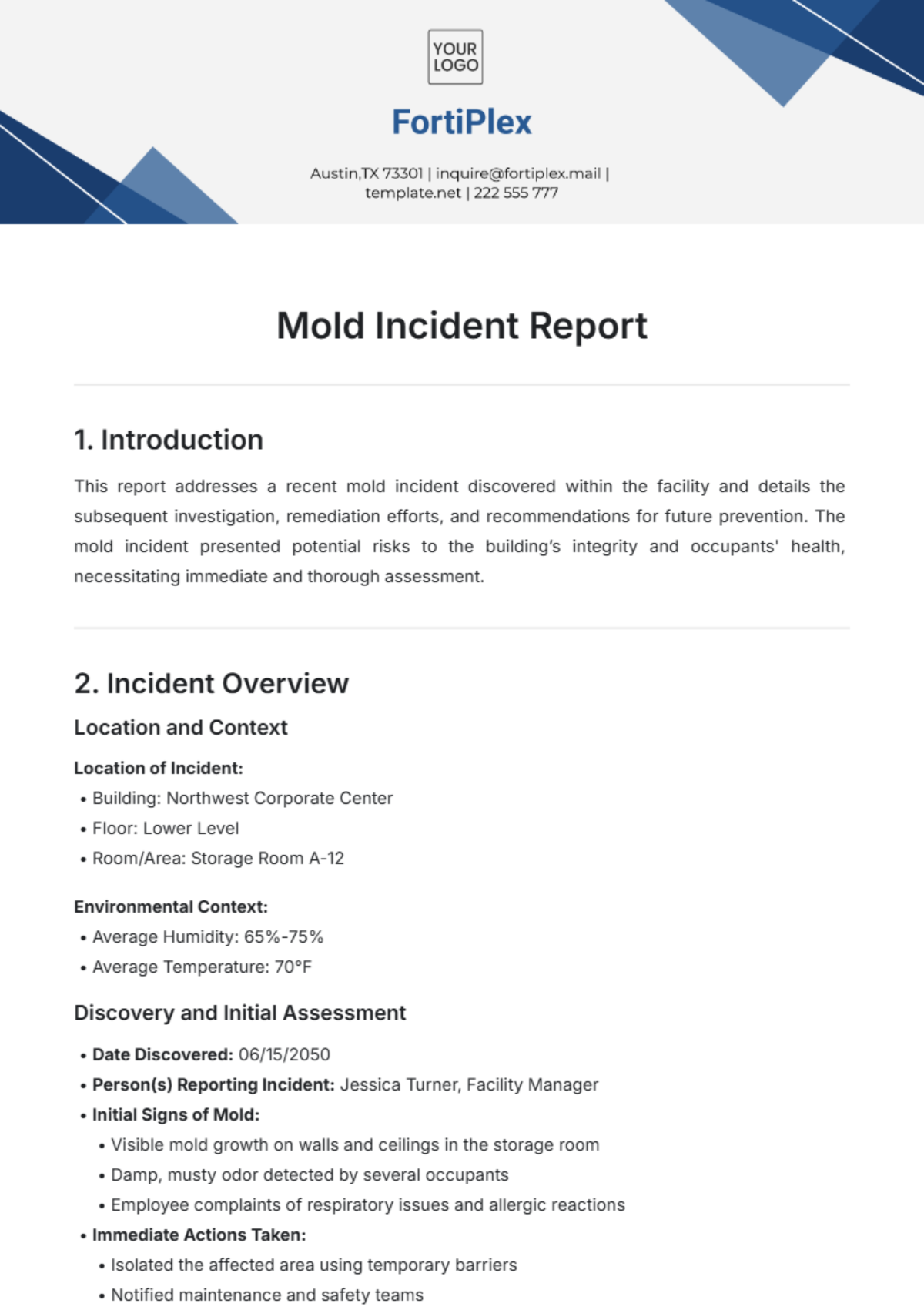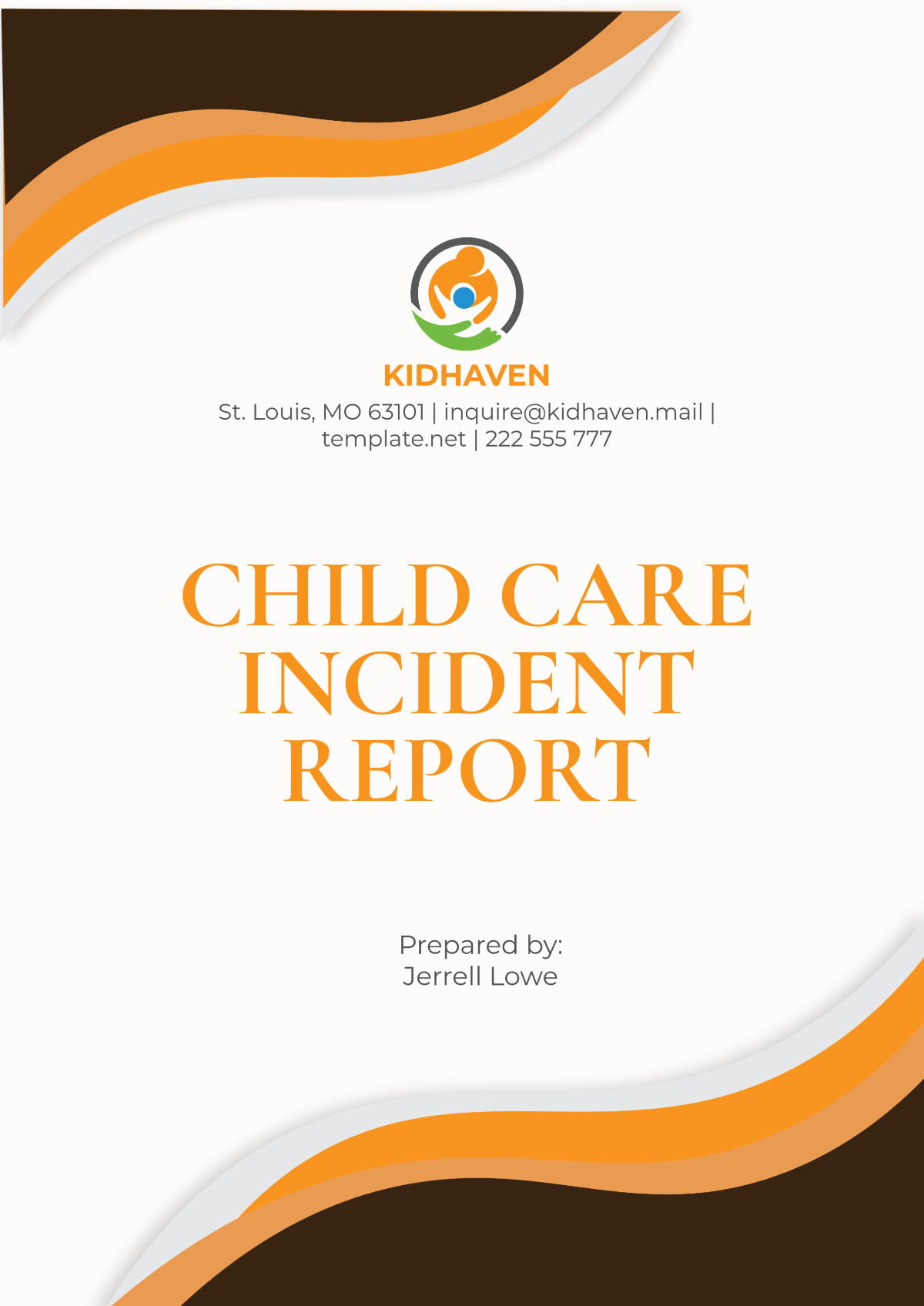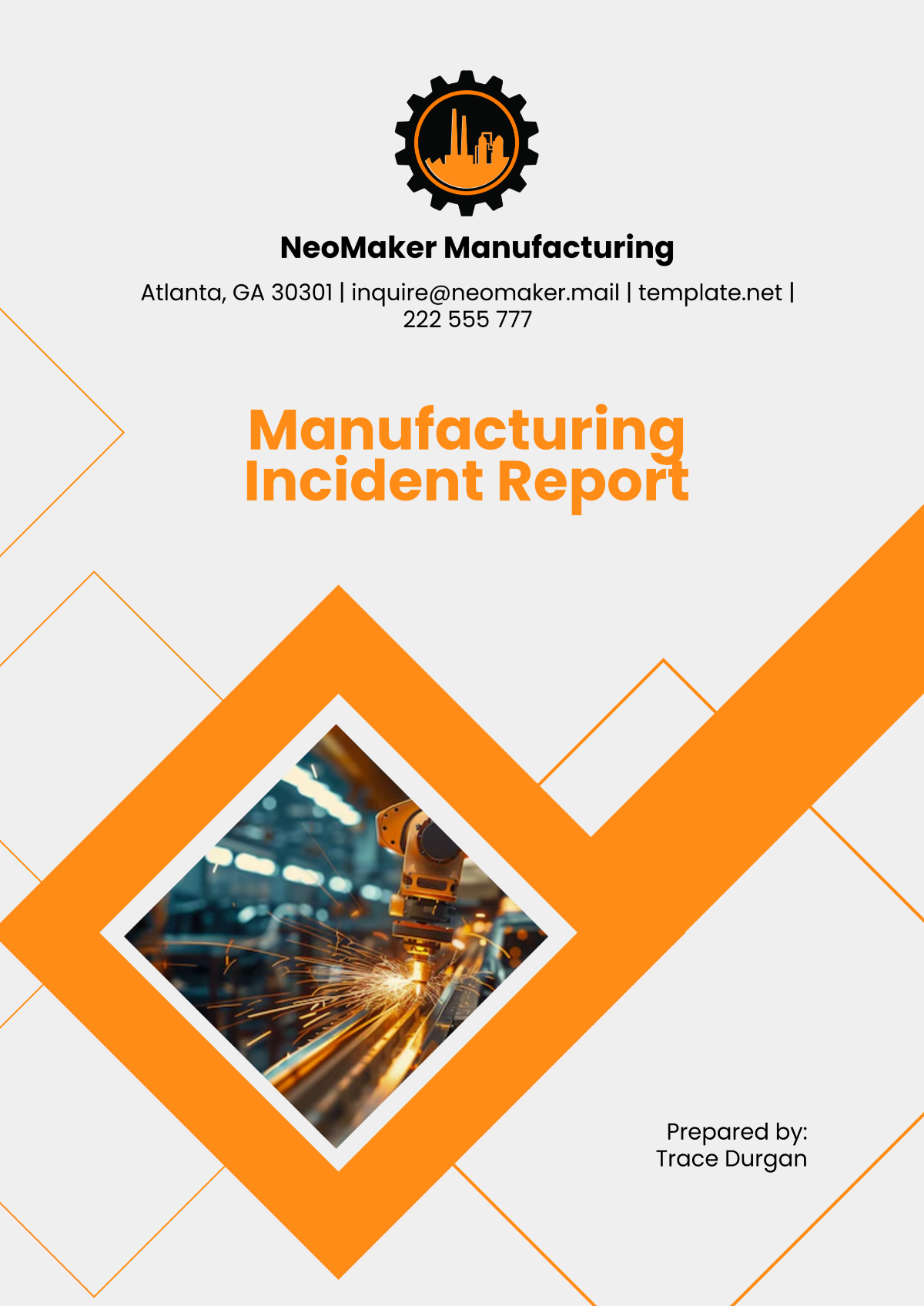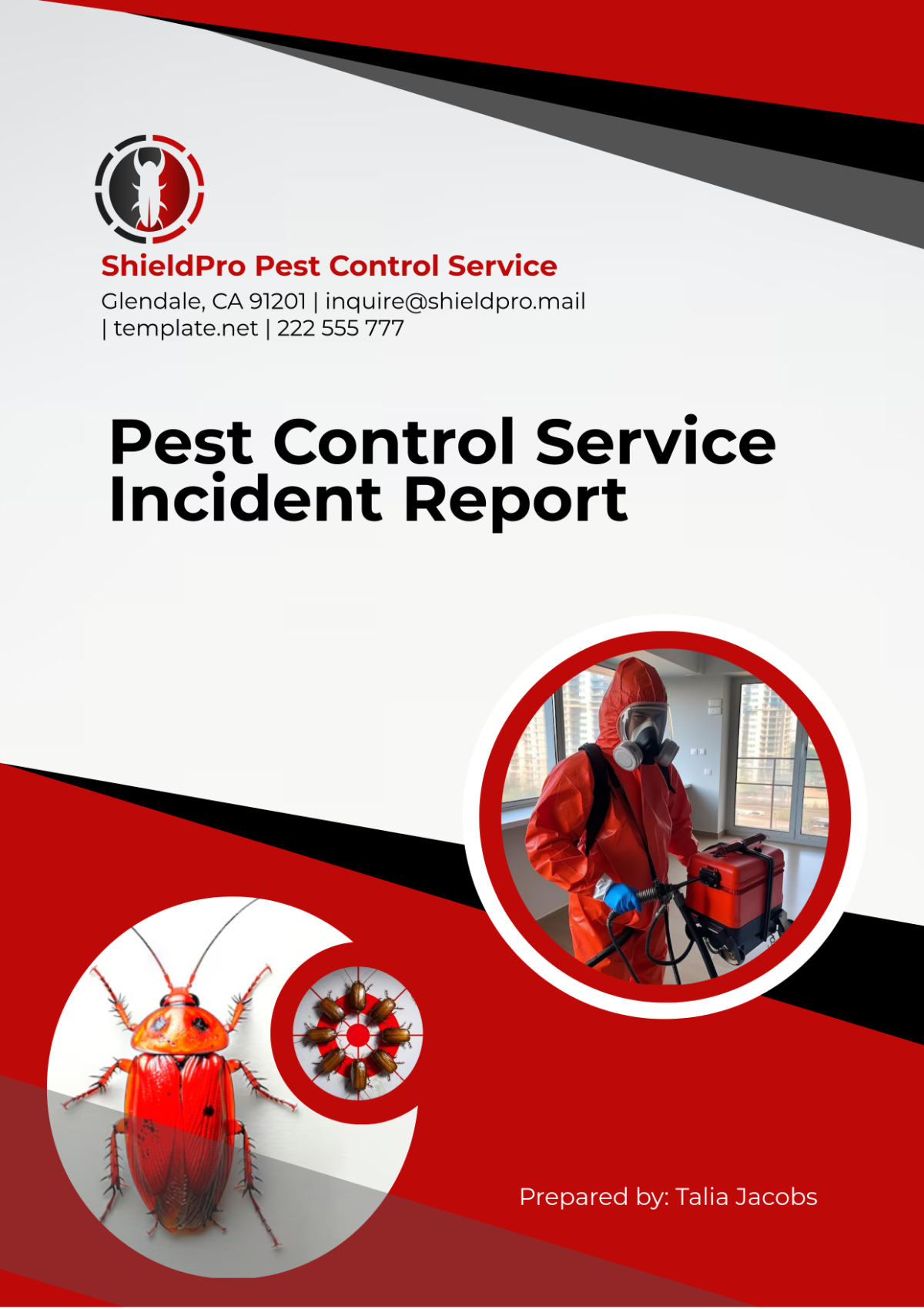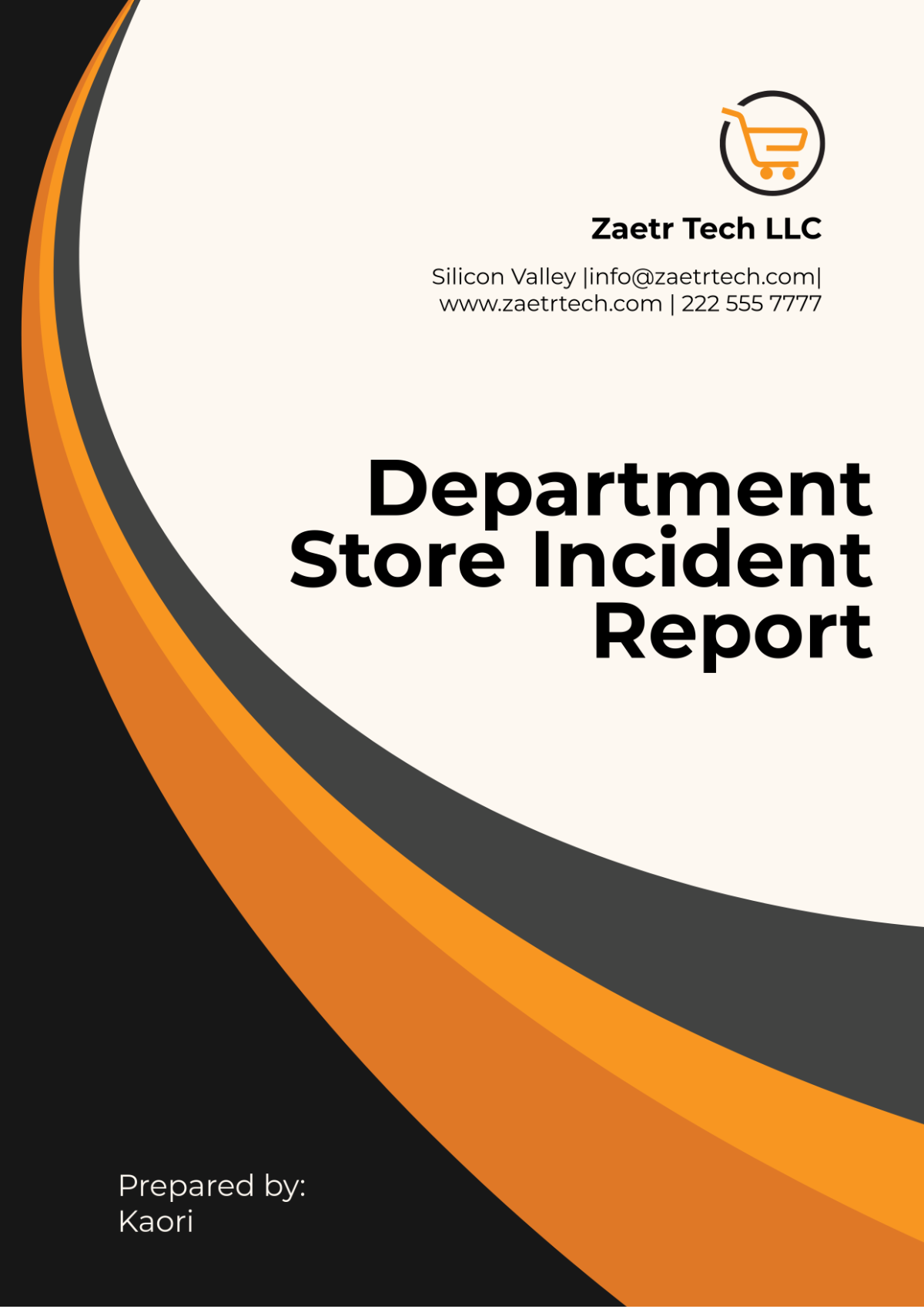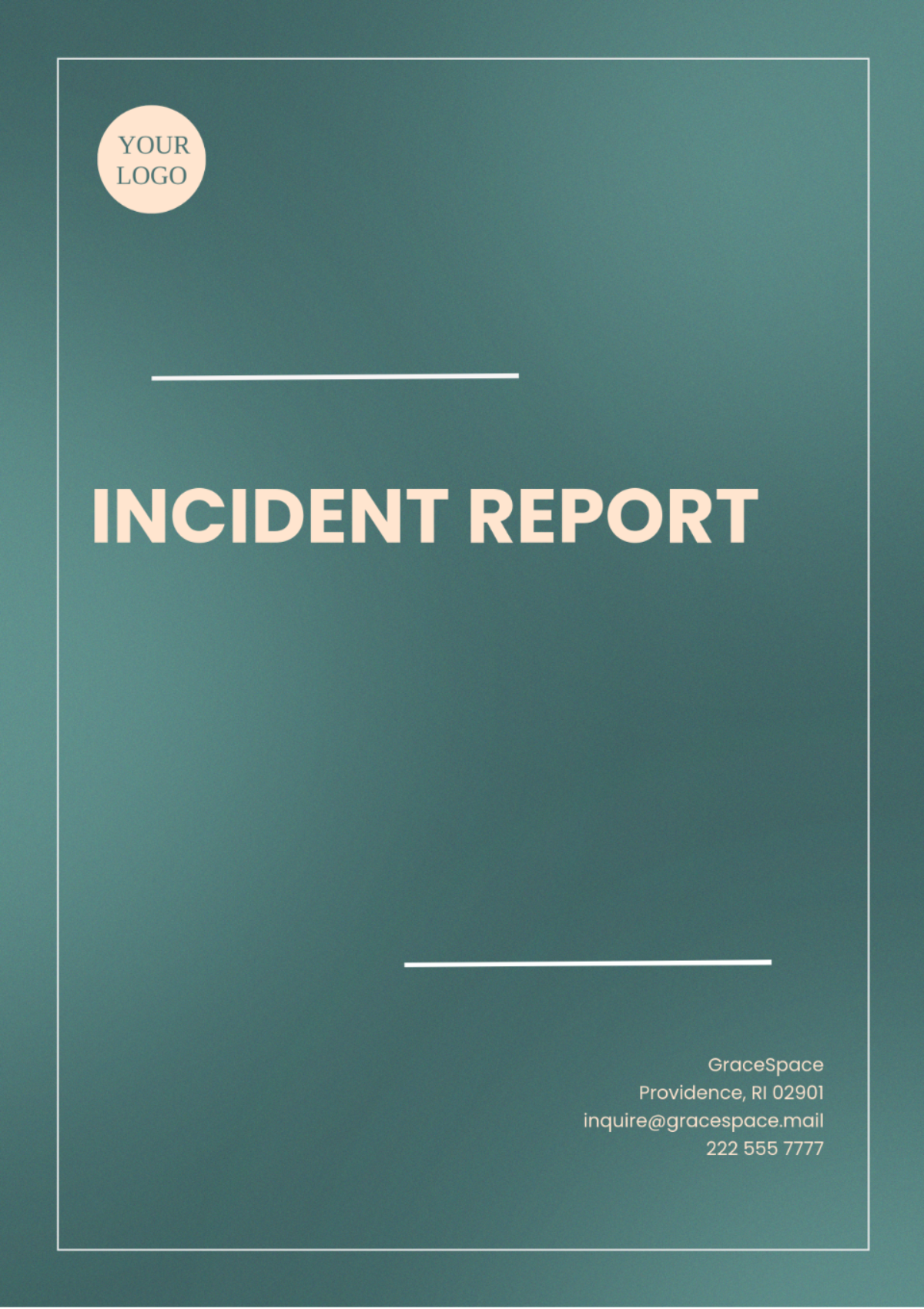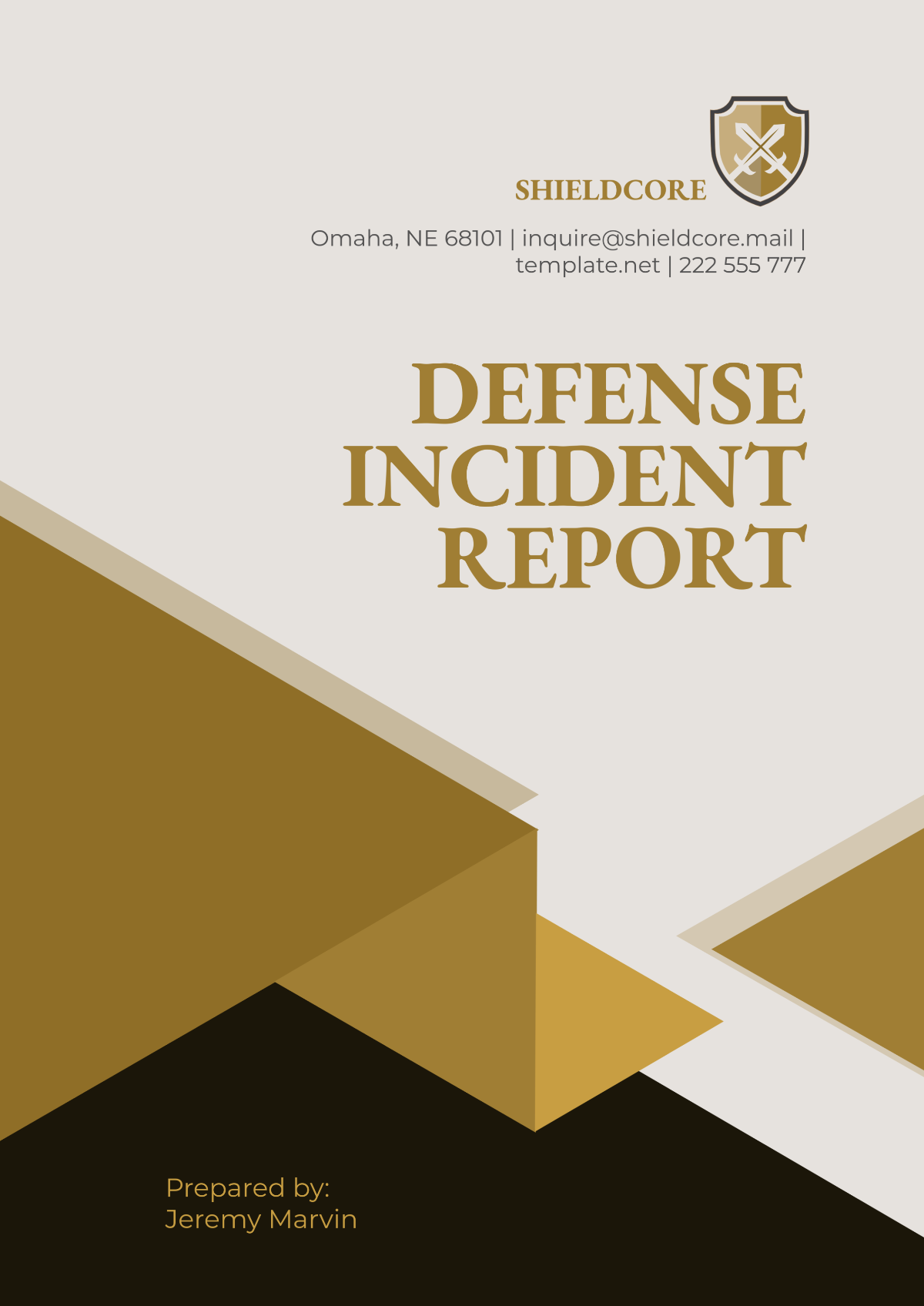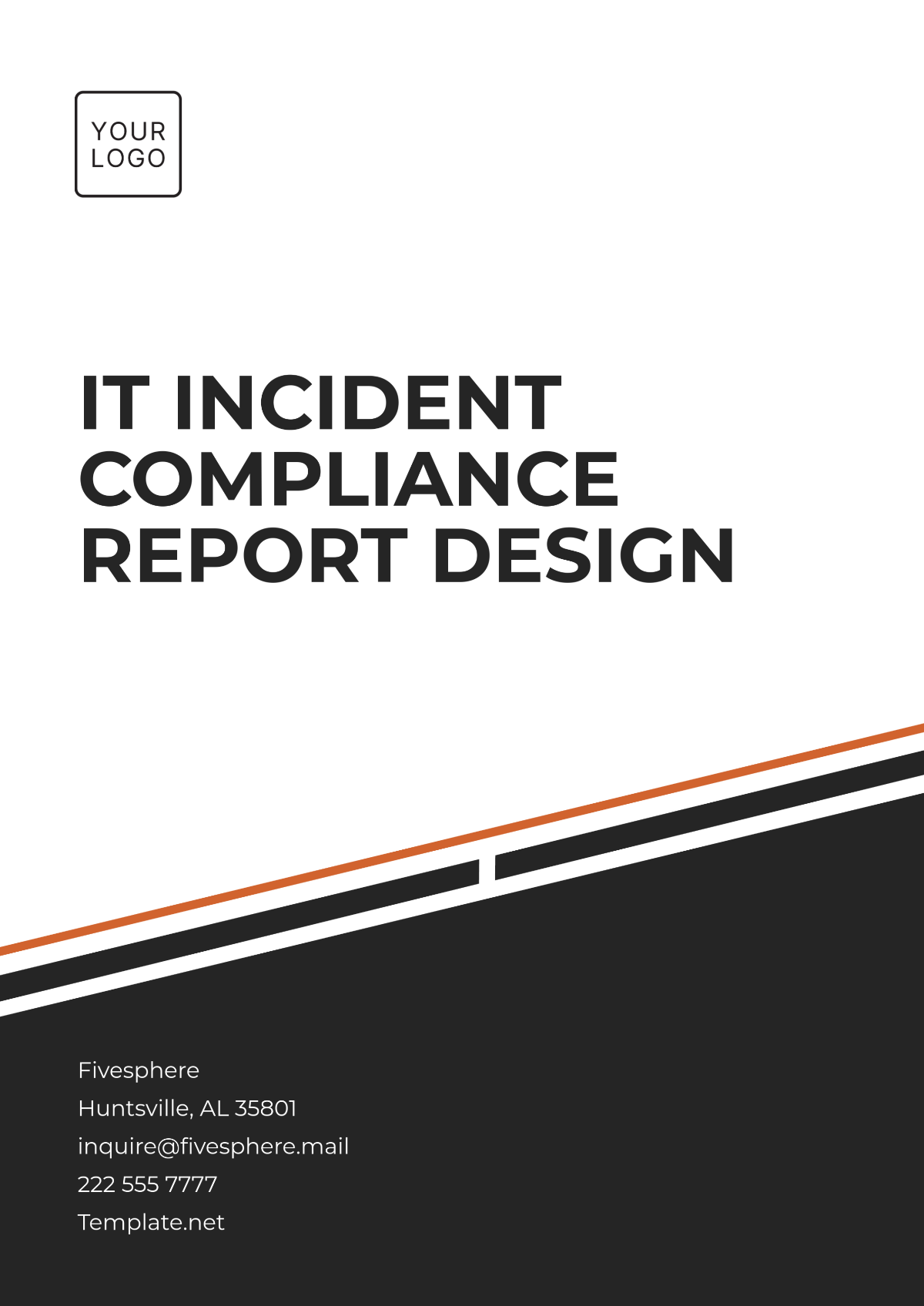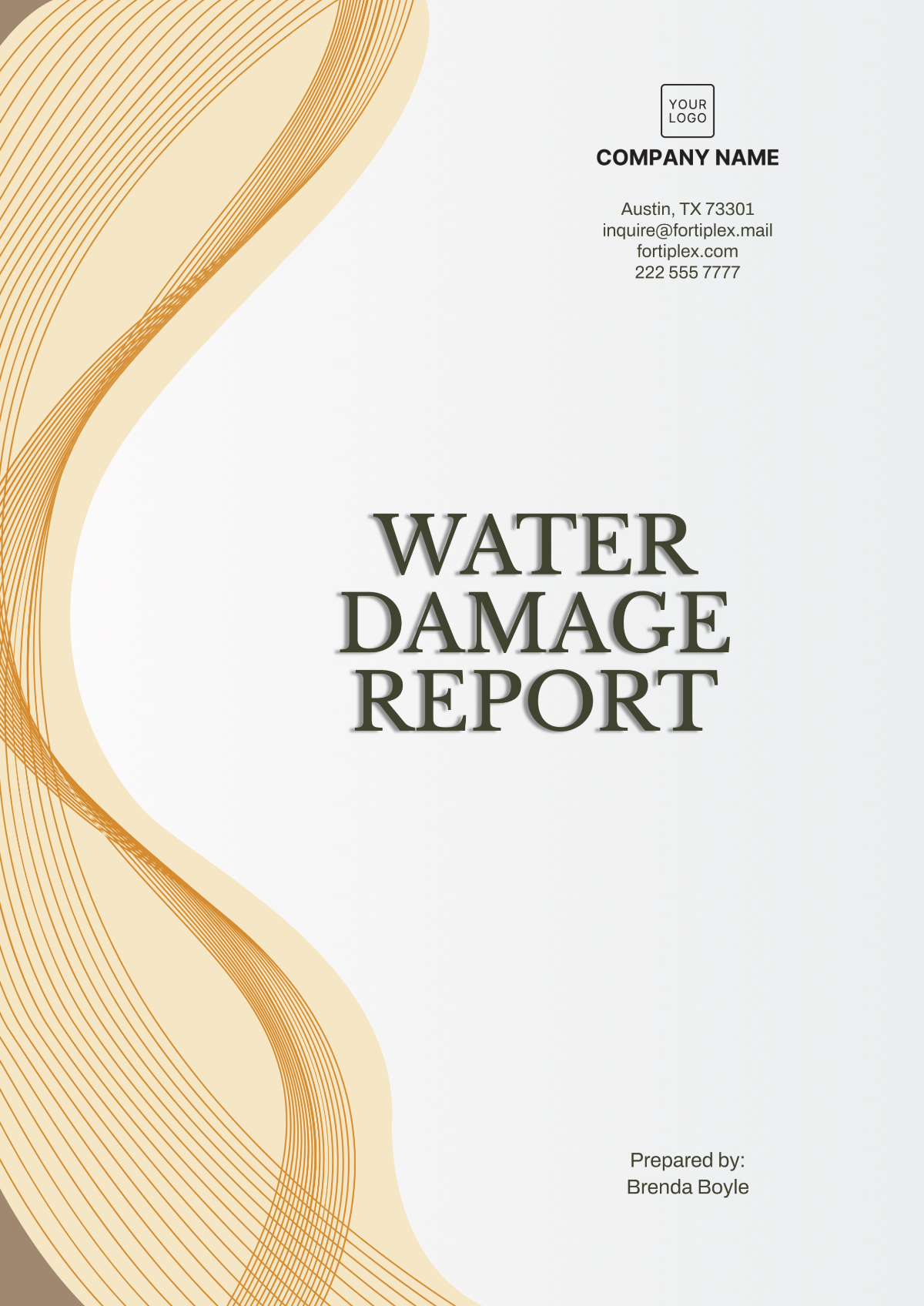Emergency Response Annual Report
I. Executive Summary
In [Year], [Your Company Name] encountered numerous emergency scenarios, ranging from natural disasters to cybersecurity threats. This section summarizes the year's critical emergency management initiatives, challenges, and achievements. It provides a snapshot of our capacity to handle complex emergencies and implement effective response strategies.
Highlights of the year include the successful integration of a new crisis management software, improving our response time by 25%, and the challenges faced during the large-scale evacuation necessitated by a natural disaster, which tested our logistical capabilities.
II. Introduction
Throughout [Year], [Your Company Name] managed a variety of emergencies, ranging from natural disasters like hurricanes and floods, which required large-scale evacuation and resource mobilization, to technological emergencies such as data breaches and system outages, demanding swift IT response and recovery actions. Additionally, we addressed other significant crises, including workplace accidents and supply chain disruptions, each presenting unique challenges that tested the robustness of our emergency management strategies. These experiences not only honed our response capabilities but also provided invaluable lessons for future emergency preparedness and management.
III. Emergency Management Framework
[Your Company Name] adopts a structured and methodical approach to emergency management, ensuring a state of readiness and an effective response to any crisis. This approach is characterized by several key elements:
A. Emergency Management
Comprehensive Planning: We develop detailed emergency plans for a wide range of potential scenarios, including natural disasters, technological incidents, and security threats. These plans outline specific procedures for response and recovery, tailored to the unique risks associated with our operations and locations.
Regular Training and Drills: Our teams undergo regular training sessions and participate in drills to ensure they are prepared for various emergencies. These exercises help in familiarizing staff with emergency procedures and assessing the effectiveness of our plans and protocols.
Continuous Risk Assessment: We conduct ongoing risk assessments to identify potential hazards and vulnerabilities within our operations. This proactive approach allows us to adapt and update our emergency plans in line with evolving threats and changes in our operational environment.
Effective Communication Systems: Strong communication channels are established to ensure clear and timely information flow during an emergency. This includes internal communication among staff and external communication with emergency services, stakeholders, and the public.
Resource Management: We maintain a ready supply of emergency resources, including equipment, supplies, and trained personnel, to ensure a rapid and effective response to any incident.
B. Integration with National Emergency Response Standards
[Your Company Name] is committed to following the National Emergency Response Standards, integrating these guidelines into our internal best practices to create a holistic and effective emergency management system.
Alignment with Standards: Our emergency procedures and protocols are designed to align with national standards, ensuring we meet or exceed the required benchmarks for emergency preparedness and response.
Customization and Enhancement: While we comply with national standards, we also customize these guidelines to suit our specific operational needs and risks. This customization allows us to address unique challenges that may not be covered by general standards.
Regular Audits and Reviews: We conduct regular audits and reviews of our emergency management practices against the National Emergency Response Standards. This helps in identifying areas for improvement and ensuring our practices remain up-to-date with the latest guidelines and best practices.
Staff Training and Awareness: Employees at all levels are trained in the relevant aspects of the National Emergency Response Standards. This ensures a company-wide understanding and implementation of these standards in our emergency response efforts.
Stakeholder Collaboration: We collaborate with local emergency services and other relevant stakeholders to ensure our adherence to national standards is in sync with local requirements and practices.
C. Emergency Management Team
The framework includes a detailed description of the emergency management team, consisting of roles such as Incident Commander, Logistics Coordinator, and Safety Officer. This delineation ensures a coordinated response to emergencies.
1. Incident Commander: The Incident Commander is the central figure in the emergency management team, responsible for overseeing all aspects of an emergency response. This role involves making critical decisions, coordinating between various teams, and ensuring effective communication both within the organization and with external agencies.
2. Logistics Coordinator: The Logistics Coordinator plays a vital role in managing resources and supplies during an emergency. This position is responsible for ensuring that all necessary materials and equipment are available and efficiently distributed as required.
3. Safety Officer: The Safety Officer is tasked with ensuring that all emergency response activities are conducted safely and in compliance with relevant laws and regulations. This role involves identifying potential hazards, assessing risks, and implementing safety measures to protect both responders and affected individuals.
IV. Year in Review
In [Year], [Your Company Name] managed a range of emergency incidents, each presenting unique challenges and learning opportunities. Below is a detailed analysis of these incidents, including the nature of the incidents, our response actions, and the outcomes of these actions:
A. Natural Disaster Response
The year [Year] saw significant natural disasters, including severe flooding and a hurricane, impacting our facilities and the surrounding communities.
Response Actions: Our response involved activating our disaster recovery plan, which included evacuating affected areas, setting up temporary shelters, and providing aid and resources to employees and community members. We coordinated closely with local authorities and relief agencies.
Outcomes: The quick and coordinated response helped minimize injuries and property damage. Post-disaster, we focused on rapid restoration of operations and aiding community recovery efforts, which strengthened our relationship with local stakeholders and highlighted the effectiveness of our disaster recovery plans.
B. Technological Emergencies
[Your Company Name] experienced a significant cybersecurity breach, leading to data vulnerability, and a separate incident of a major system outage affecting our operations.
Response Actions: For the cybersecurity breach, we immediately activated our IT crisis team, which worked to contain the breach, assess the damage, and communicate transparently with stakeholders. For the system outage, we implemented our IT contingency plan, mobilizing alternative systems and resources to maintain operational continuity.
Outcomes: The breach was contained with minimal data loss, and a comprehensive review led to strengthened cybersecurity measures. The system outage was resolved within the set target time, with minimal disruption to services, showcasing the robustness of our IT contingency planning.
C. Workplace Incidents
Several workplace incidents, including accidents and health-related emergencies, occurred in various company locations.
Response Actions: Our on-site emergency response teams provided immediate assistance, following established health and safety protocols. We also conducted thorough investigations to understand the causes and prevent future occurrences.
Outcomes: Quick response in these incidents resulted in timely medical care, preventing serious injuries. The investigations led to enhanced safety measures and training programs, demonstrating our commitment to employee health and safety.
D. Supply Chain Disruptions
Disruptions in the supply chain due to external factors like transportation strikes and supplier issues posed challenges to our operations.
Response Actions: We activated our supply chain contingency plans, identifying alternative suppliers and routes, and communicating proactively with clients and partners about potential delays.
Outcomes: The disruptions were managed effectively, with minimal impact on service delivery and client satisfaction. These incidents underscored the importance of having robust and flexible supply chain strategies.
E. Community Emergencies
[Your Company Name] was involved in responding to local community crises, including public health emergencies.
Response Actions: We provided support through resources, expertise, and volunteer efforts, working alongside community organizations and public health officials.
Outcomes: Our involvement in community emergencies enhanced our reputation as a socially responsible company and strengthened community bonds. It also provided insights into how we can better support and collaborate with our communities in times of crisis.
V. Response Activities and Outcomes
This section details specific emergency incidents faced by [Your Company Name] in [Year] and the corresponding responses. It includes an analysis of the effectiveness of these responses, the resources utilized, and the overall impact on operations and stakeholders.
A. Widespread Power Outage
In [Year], [Your Company Name] experienced a widespread power outage affecting multiple facilities, disrupting operations and communication systems.
Response Actions: We activated our emergency power protocols, deploying backup generators to critical facilities. Our IT team swiftly implemented contingency plans to maintain data integrity and communication. We also communicated regularly with employees and stakeholders about the status of the outage and expected resolution times.
Effectiveness and Impact: The rapid deployment of backup power sources ensured that critical operations continued with minimal disruption. However, some non-critical functions experienced delays. The incident highlighted the need for more extensive coverage of backup power solutions across all facilities. Stakeholder communication was effective in managing expectations and maintaining trust.
B. Cybersecurity Breach
A significant cybersecurity breach occurred, compromising sensitive data and threatening our IT infrastructure.
Response Actions: Our cybersecurity team immediately isolated the affected systems to prevent further data loss and began a thorough investigation. We engaged with cybersecurity experts for additional support and notified relevant stakeholders, including clients and regulatory bodies, about the breach and our response measures.
Effectiveness and Impact: The swift isolation of systems limited the extent of the breach, and no critical data was irretrievably lost. The transparent communication strategy maintained stakeholder trust. Post-incident, we enhanced our cybersecurity measures, including more robust firewalls and employee training on data security. The breach, while contained, highlighted vulnerabilities in our digital defenses and the need for ongoing vigilance.
D. Supply Chain Disruption
[Your Company Name] faced a significant supply chain disruption due to unforeseen global events, impacting our inventory levels and delivery timelines.
Response Actions: We activated alternative supply chain routes and collaborated with new suppliers to mitigate the disruption. Our logistics team worked overtime to manage inventory and distribution effectively. We also communicated proactively with customers about potential delays.
Effectiveness and Impact: The activation of alternative supply routes allowed us to maintain a majority of our deliveries on schedule, though some delays were inevitable. Customer communication was key in managing expectations and maintaining relationships. The incident underscored the importance of having diversified and flexible supply chain strategies.
E. Natural Disaster
Severe flooding impacted one of our key operational regions, endangering facilities and employees.
Response Actions: We enacted our disaster response plan, which included evacuating affected facilities, providing support to employees and their families, and setting up temporary operational bases. Collaboration with local authorities ensured a coordinated response.
Effectiveness and Impact: The evacuation and support measures were effective in ensuring employee safety and mitigating property damage. However, operations were significantly impacted. The incident emphasized the need for more robust disaster preparedness and recovery plans, particularly in high-risk areas.
F. Workplace Accident
A serious workplace accident occurred in one of our manufacturing plants, resulting in injuries and temporary shutdown of operations.
Response Actions: Immediate medical assistance was provided, and an investigation was launched to determine the cause of the accident. Safety protocols were reviewed and reinforced across all facilities.
Effectiveness and Impact: Quick emergency response minimized the severity of injuries. The investigation led to improved safety measures, but the incident affected employee morale and highlighted areas for improvement in our workplace safety practices.
VI. Training and Drills
This section outlines [Your Company Name]'s commitment to continuous training and preparedness. It details the various training programs and drills conducted throughout [Year], including the scenarios covered and the objectives of each program.
Training Programs and Drills Conducted in [Year]
Here are the training programs and drills that were conducted in [Year]:
1. Natural Disaster Response Drills: Focused on preparing employees for events like floods, earthquakes, or hurricanes. Objectives included practicing evacuation procedures, resource allocation, and emergency communication protocols. These drills were particularly relevant for facilities located in high-risk areas.
2. Cybersecurity Attack Simulations: Aimed at enhancing our team’s ability to detect, respond to, and recover from cyber threats. The program included mock cyber-attack scenarios, testing the effectiveness of our IT security systems and employee awareness of cybersecurity best practices.
3. Workplace Safety Exercises: Conducted to reinforce knowledge of safety protocols and proper use of safety equipment. These exercises were critical in industries where physical safety is a concern, focusing on preventing accidents and responding to emergencies like fires or chemical spills.
4. Crisis Communication Workshops: Designed to train key personnel in managing communications during a crisis. These workshops covered media relations, internal communication strategies, and coordination with external agencies, emphasizing clear, accurate, and timely communication.
VII. Challenges and Lessons Learned
This section delves into the challenges faced by [Your Company Name] in managing emergencies in [Year]. It provides an honest assessment of the difficulties encountered, the impact on our operations, and the steps taken to address these challenges.
A. Resource Allocation During Simultaneous Emergencies
In [Year], we faced challenges in efficiently allocating resources during multiple, simultaneous emergencies. This situation stretched our capacity, leading to delays in response times and resource distribution.
Impact on Operations: The strain on resources affected our ability to maintain operational efficiency and meet our usual standards of response in all affected areas simultaneously.
Steps Taken: We have since invested in enhancing our resource inventory and developed more robust contingency plans. Additionally, we've established partnerships with external agencies for resource sharing in times of crisis.
Lessons Learned: The need for flexible and scalable resource management strategies became evident. We learned the importance of having backup plans and partnerships to bolster our resources during high-demand situations.
B. Communication Breakdowns
In certain emergency scenarios, we experienced breakdowns in internal and external communication due to system overloads and misinformation.
Impact on Operations: This led to confusion among employees and stakeholders, delayed decision-making, and, in some cases, hindered efficient emergency response.
Steps Taken: We have upgraded our communication infrastructure and trained staff in crisis communication. Regular drills now include scenarios to test and strengthen our communication protocols.
Lessons Learned: Durable and redundant communication systems are critical in emergencies. Clear, concise, and accurate information dissemination is essential for effective emergency management.
C. Technological Failures and Cybersecurity Incidents
We faced significant challenges due to technological failures and cybersecurity incidents, which exposed vulnerabilities in our IT infrastructure.
Impact on Operations: These incidents led to operational disruptions and, in the case of cybersecurity breaches, potential data privacy concerns.
Steps Taken: We have since bolstered our cybersecurity measures, conducted regular IT system audits, and implemented more rigorous data protection protocols.
Lessons Learned: Continuous investment in technology infrastructure and cybersecurity is non-negotiable. Regular audits and updates are necessary to safeguard against evolving digital threats.
D. Supply Chain Disruptions
Global events caused unexpected disruptions in our supply chain, impacting our inventory and delivery schedules.
Impact on Operations: This resulted in delayed production and service delivery, affecting our customer commitments and satisfaction levels.
Steps Taken: We diversified our supplier base, developed alternative supply routes, and enhanced our inventory management systems.
Lessons Learned: A flexible and diversified supply chain is crucial for maintaining business continuity. Proactive supply chain risk management helps in minimizing the impact of external disruptions.
E. Employee Safety and Wellbeing During Emergencies
Ensuring the safety and wellbeing of employees during high-stress emergency situations was challenging, especially in remote or high-risk areas.
Impact on Operations: Concerns over employee safety impacted morale and, in some cases, resulted in operational delays.
Steps Taken: We have enhanced our employee safety protocols, provided additional support and training for staff, and improved our emergency evacuation and response measures.
Lessons Learned: Employee safety is paramount and directly impacts operational efficiency. Investing in employee safety measures and training is essential for maintaining a resilient workforce.
VIII. Conclusion and Acknowledgements
Throughout [Year], [Your Company Name] demonstrated a strong commitment to enhancing our emergency management capabilities. This included addressing a range of emergency incidents with efficiency and resilience. A key focus of the year was on the continuous training and development of our staff. Through advanced training programs and realistic drills, we have significantly improved our team’s response times and overall emergency preparedness.
We extend our deepest gratitude to our partners, local authorities, emergency services, and the community for their collaboration and support. Your contributions have been instrumental in enhancing our emergency response efforts and building a resilient community.
